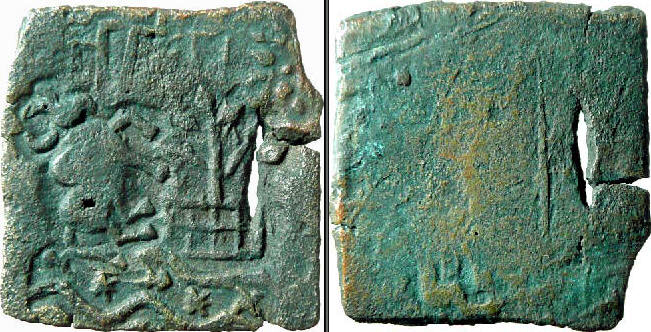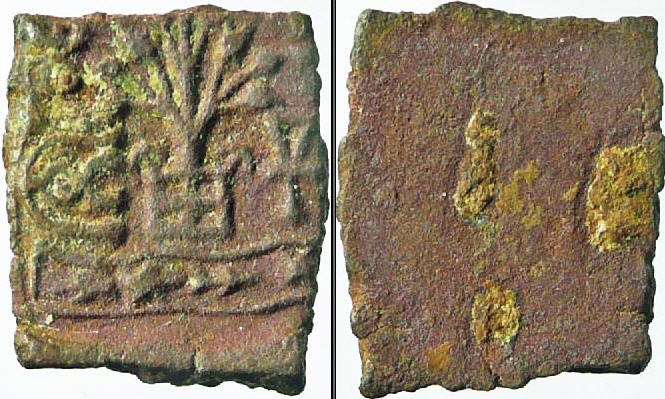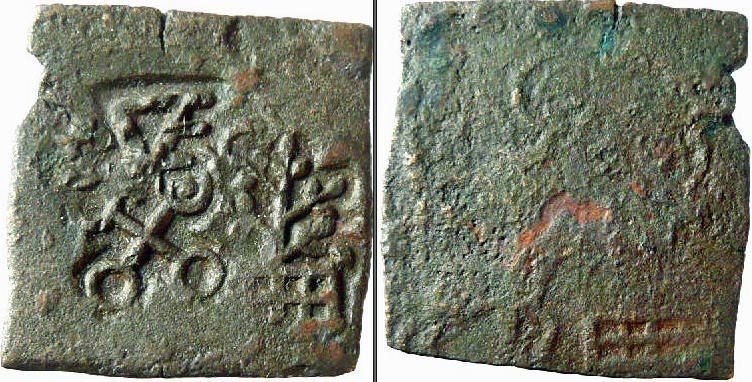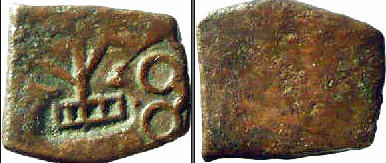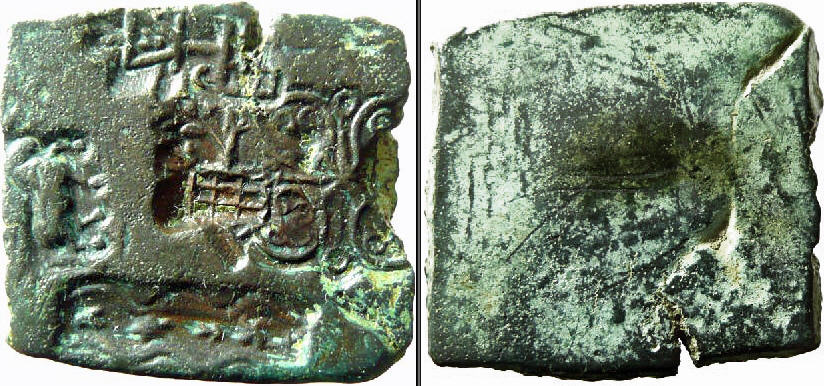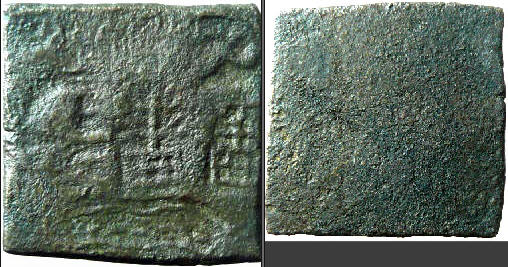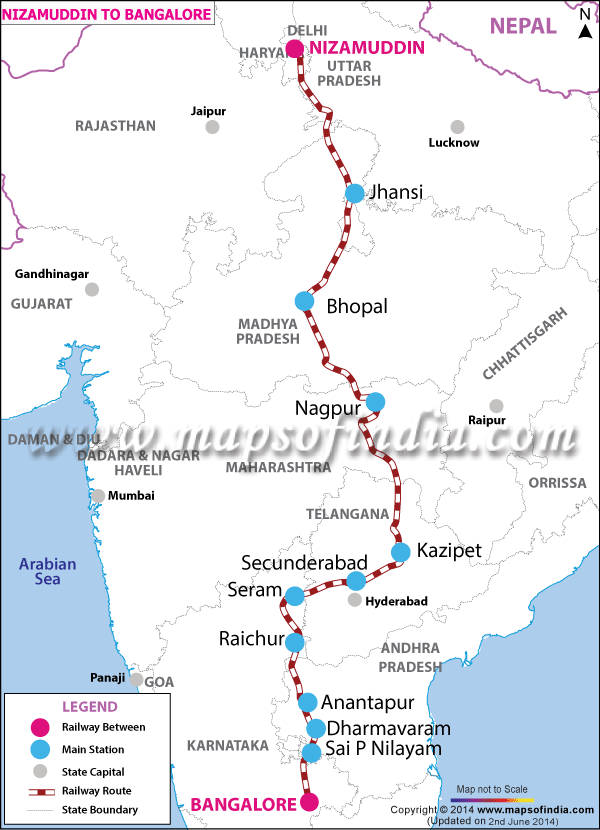https://tinyurl.com/y9m323w8
What is the Meluhha word to signify the Amaravati pillar, an Indus Script hypertext?
Śrīvatsa khambhaṛā, paṭṭaḍi, phaḍā 'smithy, forge, mint, metals manufactory for wealth'.![Related image]() Worshippers of a fiery pillar, Amaravati stupa.
Worshippers of a fiery pillar, Amaravati stupa.
श्री--वत्स [p= 1100,1] m. " favourite of श्री " N. of विष्णु L.a partic. mark or curl of hair on the breast of विष्णु or कृष्ण (and of other divine beings ; said to be white and represented in pictures by a symbol resembling a cruciform flower) MBh. Ka1v. &c; the emblem of the tenth जिन (or विष्णु's mark so used) L.
श्री śrī:-वत्सः 1 an epithet of Viṣṇu.-2 a mark or curl of hair on the breast of Viṣṇu; प्रभानुलिप्त- श्रीवत्सं लक्ष्मीविभ्रमदर्पणम् R.1.1.-
Atharva Veda (X.8.2) declares that Heaven and Earth stand fast being pillared apart by the pillar. Like the pillar, twilight of the dawn and dusk split apart the originally fused Heaven and Earth.
Light of dawn ‘divorces the coterminous regions – Sky and Earth – and makes manifest the several worlds. (RV VII.80; cf. VI.32.2, SBr. IV 6.7.9).
‘Sun is spac, for it is only when it rises that the world is seen’ (Jaiminiya Upanishad Brahmana I.25.1-2). When the sun sets, space returns into the void (JUB III.1.1-2).
Indra supports heavn and earth by ‘opening the shadows with the dawn and the sun’. (RV I.62.5). He ‘extends heaven by the sun; and the sun is the prp whereby he struts it.’ (RV X.111.5).
‘He who knows the Brahman in man knows the Supreme Being and he who knows the Supreme Brahman knows the Stambha’. (AV X. 7.17).
Linga-Purana (I.17.5-52; 19.8 ff.) provides a narrative. Siva appeared before Brahma and Vishnu as a fiery linga with thousands of flames. As a Goose, Brahma attempted to fly to the apex of the column; Vishnu as a Boar plunged through the earth to find the foot of the blazing column. Even after a thousand years, they couldn’t reach the destination, bow in homage to the Pillar of the Universe as the Paramaatman.
He is the ‘Pillar supporting the kindreds, that is, gods and men’. (RV I.59.1-2). He is the standard (ketu) of the yajna (equivalent of the dawn), the standard which supports heaven in the East at daybreak. (RV I.113.19; III.8.8).
The same spectra of meanings abound in Bauddham, as a symbolic continuum. So it is, the Buddha is a fiery pillar, comprising adorants at the feet marked with the Wheel of Dharma and the apex marked by a Śrīvatsa (pair of fishes tied together by a thread, read as hieroglyph composition: ayira (metath. ariya) dhama, mandating norms of social, interpersonal conduct). Just as Agni awakens at dawn, the Buddha is the awakened.


Male devotees around a throne with a turban(note feet below the throne). paṭa 'throne, turban' PLUS aḍi 'feet' rebus: paṭṭaḍi 'mint workshop'.
Drawing of two medallions (perhaps the inner and outer face of the same piece). [WD1061, folio 45]
Copyright © The British Library Board
Inscribed:3ft. by 3ft.2in. Outer circle 2nd. H.H. March 8th 1817.
Copyright © The British Library Board
Inscribed:3ft. by 3ft.2in. Outer circle 2nd. H.H. March 8th 1817.
Location of Sculpture: Unknown.


The hypertexts are: kambha 'pillar' PLUS khambhaṛā 'fish-fin' pair atop rebus: aya 'fish' rebus: aya 'iron' PLUS kammaṭa 'mint,l coiner, coinage' PLUS feet PLUS throne, turban: ayo kammaṭa 'metal mint' PLUS paṭa aḍi 'throne, turban, slab' PLUS 'anvil' = hypertext, paṭṭaḍi 'metal anvil workshop'.
ayo kammaṭa dvāra 'entrance to metal mint' is an expression used in Mahāvamsa. XXV, 28,
The expression has been wrongly translated as iron-studded gate. It is indeed a reference to the entrance to metal mjint workshop, as signified by the 'Śrīvatsa' ayo kammaṭa hypertext adorning the torana of the gateways of Bharhut and Sanchi.





khambhā, thãbharā, khambhaṛā 'pillar, fish-fin' rebus tã̄bṛā, tambira 'copper' rebus kammaṭa 'mint' kambāra 'blacksmith'. These are Bronze Age Indus Script hypertexts.
Four streams of Indus Script cipher on hieroglyphs/hypertexts are seen in the following rebus readings; the streams are:
tã̄bṛā, tambira 'copper'
kambāra 'blacksmith'
kammaṭa 'mint'
Itihāsa of Bhārata bronze-age, ayo kammaṭa dvāra, 'metals mint workshop entrance' (Mahāvamsa. XXV, 28); paṭṭaḍi 'metal anvil workshop' based on Amaravati, Bharhut, Begram, Sanchi, Bodh Gaya ancient sculptural friezes (ca. 3rd cent. BCE), Indus Script (4th millennium BCE) & Atharva Veda Skambha Sukta(AV X.7)(undated, Bronze_Age).
The monograph demonstrates the signifiers of two Indus Script hypertexts on iconographs of Amaravati, Bharhut, Sanchi sculptural friezes.
The hypertexts are:
ayo kammaṭa dvāra, 'entrance mint workshop'
The monograph demonstrates the signifiers of two Indus Script hypertexts on iconographs of Amaravati, Bharhut, Sanchi sculptural friezes.
The hypertexts are:
ayo kammaṭa dvāra, 'entrance mint workshop'
paṭṭaḍi 'metal anvil workshop'.
See:
paṭṭaḍi cognate phaḍā 'smithy, metals manufactory' is cognate phaḍā 'metals manufactory'
Hieroglyph: फडा (p. 313) phaḍā f (फटा S) The hood of Coluber Nága &c. Ta. patam cobra's hood. Ma. paṭam id. Ka. peḍe id. Te. paḍaga id. Go. (S.) paṛge, (Mu.) baṛak, (Ma.) baṛki, (F-H.) biṛki hood of serpent (Voc. 2154). / Turner, CDIAL, no. 9040, Skt. (s)phaṭa-, sphaṭā- a serpent's expanded hood, Pkt. phaḍā- id. For IE etymology, see Burrow, The Problem of Shwa in Sanskrit, p. 45.(DEDR 47) Rebus: phaḍa फड ‘manufactory, company, guild, public office’, keeper of all accounts, registers.
फडपूस (p. 313) phaḍapūsa f (फड & पुसणें) Public or open inquiry. फडफरमाश or स (p. 313) phaḍapharamāśa or sa f ( H & P) Fruit, vegetables &c. furnished on occasions to Rajas and public officers, on the authority of their order upon the villages; any petty article or trifling work exacted from the Ryots by Government or a public officer.
பட்டரை¹ paṭṭarai , n. See பட்டறை¹. (C. G . 95.) பட்டறை¹ paṭṭaṟai , n. < பட்டடை¹. 1. See பட்டடை, 1, 3, 5, 7, 8, 12, 14. 2. Machine; யந்திரம். 3. Rice-hulling machine; நெல்லுக் குத்தும் யந்திரம். Mod. 4. Factory; தொழிற்சாலை. Mod. 5. Beam of a house; வீட்டின் உத்திரம். 6. Wall of the required height from the flooring of a house; வீட்டின் தளத்திலிருந்து எழுப்ப வேண்டும் அளவில் எழுப்பிய சுவர். வீடுகளுக்குப் பட்டறை மட்டம் ஒன்பதடி உயரத்துக்குக் குறை யாமல் (சர்வா. சிற். 48). பட்டறை² paṭṭaṟai , n. < K. paṭṭale. 1. Community; சனக்கூட்டம். 2. Guild, as of workmen; தொழிலாளர் சமுதாயம். (Tamil)
Ta. kampaṭṭam coinage, coin. Ma. kammaṭṭam, kammiṭṭam coinage, mint. Ka. kammaṭa id.; kammaṭi a coiner. (DEDR 1236)
skabha 13638 *skabha ʻ post, peg ʼ. [√skambh]Kal. Kho. iskow ʻ peg ʼ BelvalkarVol 86 with (?).
SKAMBH ʻ make firm ʼ: *skabdha -- , skambhá -- 1, skámbhana -- ; -- √*chambh.
skambhá 13639 skambhá1 m. ʻ prop, pillar ʼ RV. 2. ʻ *pit ʼ (semant. cf. kūˊpa -- 1). [√skambh]1. Pa. khambha -- m. ʻ prop ʼ; Pk. khaṁbha -- m. ʻ post, pillar ʼ; Pr. iškyöp, üšköb ʻ bridge ʼ NTS xv 251; L. (Ju.) khabbā m., mult. khambbā m. ʻ stake forming fulcrum for oar ʼ; P. khambh, khambhā, khammhā m. ʻ wooden prop, post ʼ; WPah.bhal. kham m. ʻ a part of the yoke of a plough ʼ, (Joshi)khāmbā m. ʻ beam, pier ʼ; Ku. khāmo ʻ a support ʼ, gng. khām ʻ pillar (of wood or bricks) ʼ; N. khã̄bo ʻ pillar, post ʼ, B. khām, khāmbā; Or. khamba ʻ post, stake ʼ; Bi. khāmā ʻ post of brick -- crushing machine ʼ, khāmhī ʻ support of betel -- cage roof ʼ, khamhiyā ʻ wooden pillar supporting roof ʼ; Mth. khāmh,khāmhī ʻ pillar, post ʼ, khamhā ʻ rudder -- post ʼ; Bhoj. khambhā ʻ pillar ʼ, khambhiyā ʻ prop ʼ; OAw. khāṁbhe m. pl. ʻ pillars ʼ, lakh. khambhā; H. khāmm. ʻ post, pillar, mast ʼ, khambh f. ʻ pillar, pole ʼ; G. khām m. ʻ pillar ʼ, khã̄bhi, °bi f. ʻ post ʼ, M. khã̄b m., Ko. khāmbho, °bo, Si. kap (< *kab); -- Xgambhīra -- , sthāṇú -- , sthūˊṇā -- qq.v.2. K. khambürü f. ʻ hollow left in a heap of grain when some is removed ʼ; Or. khamā ʻ long pit, hole in the earth ʼ, khamiā ʻ small hole ʼ; Marw. khã̄baṛoʻ hole ʼ; G. khã̄bhũ n. ʻ pit for sweepings and manure ʼ. Garh. khambu ʻ pillar ʼ.
skambha 13640 *skambha2 ʻ shoulder -- blade, wing, plumage ʼ. [Cf. *skapa -- s.v. *khavaka -- ]S. khambhu, °bho m. ʻ plumage ʼ, khambhuṛi f. ʻ wing ʼ; L. khabbh m., mult. khambh m. ʻ shoulder -- blade, wing, feather ʼ, khet. khamb ʻ wing ʼ, mult. khambhaṛā m. ʻ fin ʼ; P. khambh m. ʻ wing, feather ʼ; G. khā̆m f., khabhɔ m. ʻ shoulder ʼ.
skambhaghara 13641 *skambhaghara ʻ house of posts ʼ. [skambhá -- 1, ghara -- ]B. khāmār ʻ barn ʼ; Or. khamāra ʻ barn, granary ʼ: or < *skambhākara -- ?13641a †skámbhatē Dhātup. ʻ props ʼ, skambháthuḥ RV. [√skambh]
Pa. khambhēti ʻ props, obstructs ʼ; -- Md. ken̆bum ʻ punting ʼ, kan̆banī ʻ punts ʼ?skambhadaṇḍa 13642 *skambhadaṇḍa ʻ pillar pole ʼ. [skambhá -- 1, daṇḍá -- ]
Bi. kamhãṛ, kamhaṛ, kamhaṇḍā ʻ wooden frame suspended from roof which drives home the thread in a loom ʼ.
skambhākara 13643 *skambhākara ʻ heap of sheaves ʼ. [skambhá -- 1, ākara -- ]Mth. khamhār ʻ pile of sheaves ʼ; -- altern. < *skambhaghara -- : B. khāmār ʻ barn ʼ; Or. khamāra ʻ barn, granary ʼ.Addenda: skámbhana -- : S.kcch. khāmṇo m. ʻ bed for plants ʼ.skámbhana 13644 skámbhana n. ʻ prop, pillar ʼ RV., skambhanīˊ -- f. VS. [√skambh]M. khã̄bṇī f. ʻ small post ʼ; -- G. khāmṇiyũ n. ʻ one of the ropes with which bucket is let down a well ʼ (i.e. from the post?); -- Or. khamaṇa ʻ pit, hole, waterchannel, lowland at foot of mountain ʼ; G. khāmṇũ n. ʻ small depression to stand round -- bottomed vessel in, basin at root of a tree for water ʼ: semant. cf. kūˊpa -- 1 and skambhá -- *kūpakastambha ʻ stem of a mast ʼ. [kūpa -- 2, stambha -- ] G. kuvātham m. ʻ mast of a ship ʼ.(CDIAL 3403) *ṭhōmba -- . 1. G. ṭhobrũ ʻ ugly, clumsy ʼ.2. M. ṭhõb m. ʻ bare trunk, boor, childless man ʼ, thõbā m. ʻ boor, short stout stick ʼ (LM 340 < stambha -- ).(CDIAL 5514) *ut -- stambha ʻ support ʼ. [Cf. údastambhīt RV., Pk. uṭṭhaṁbhaï ʻ supports ʼ: √stambh]
OG. uṭhaṁbha m.(CDIAL 1897) upastambha m. ʻ support ʼ Car., ʻ stay, prop ʼ Hit. 2. upaṣṭambha -- . [√stambh] 1. Pa. upatthambha -- m. ʻ prop ʼ, °aka -- ʻ supporting ʼ; Paš. ustūˊm, obl. ustumbāˊ ʻ tree, mulberry tree ʼ (IIFL iii 3, 18 < stambha -- ); M. othãbā m. ʻ stake planted as a support ʼ; Si. uvatam̆ba ʻ aid, support ʼ. 2. Pk. uvaṭṭhaṁbha -- m. ʻ prop ʼ; Dm. uṣṭúm ʻ yoke ʼ, Kal. urt. hūṣṭhum, Phal. uṣṭúm f.; OG. oṭhaṁbha m. ʻ support ʼ. upastambhayati ʻ supports, stiffens ʼ Suśr. [úpa- stabhnāti ŚBr., upastámbhana -- n. ʻ prop ʼ TS.: √stambh] Pa. upatthambhēti ʻ supports ʼ, °bhana -- n.; M. othãbṇẽ ʻ to lean upon or from, climb upon, press down ʼ.(CDIAL 2266, *kastambha ʻ small stem ʼ. [kastambhīˊ -- f. ʻ prop for supporting carriage -- pole ʼ ŚBr.: ka -- 3, stambha -- ] M. kāthãbā m. ʻ plantain offshoot, sucker, stole ʼ.(CDIAL 2983)stambha m. ʻ pillar, post ʼ Kāṭh., °aka -- m. Mahāvy. [√stambh]Pa. thambha -- m. ʻ pillar ʼ, Aś.rum. thabhe loc., top. thaṁbhe, ru. ṭha(ṁ)bhasi, Pk. thaṁbha -- , °aya -- , taṁbha -- , ṭhaṁbha -- m.; Wg. štɔ̈̄ma ʻ stem, tree ʼ, Kt. štom, Pr. üštyobu; Bshk. "ṭam"ʻ tree ʼ NTS xviii 124, Tor. thām; K. tham m. ʻ pillar, post ʼ, S. thambhu m.; L. thamm, thammā m. ʻ prop ʼ, (Ju.)tham, °mā, awāṇ. tham, khet. thambā; P. thamb(h), thamm(h) ʻ pillar, post ʼ, Ku. N. B. thām, Or. thamba; Bi. mar -- thamh ʻ upright post of oil -- mill ʼ; H. thã̄bh, thām, thambā ʻ prop, pillar, stem of plantain tree ʼ; OMarw. thāma m. ʻ pillar ʼ, Si. ṭäm̆ba; Md. tambu, tabu ʻ pillar, post ʼ; -- ext. -- ḍ -- : S.thambhiṛī f. ʻ inside peg of yoke ʼ; N. thāṅro ʻ prop ʼ; Aw.lakh. thãbharā ʻ post ʼ; H. thamṛā ʻ thick, corpulent ʼ; -- -- ll -- ; G. thã̄bhlɔ, thã̄blɔ m. ʻ post, pillar ʼ. -- X sthūˊṇā -- q.v. S.kcch. thambhlo m. ʻ pillar ʼ, A. thām, Md. tan̆bu.
stámbhatē ʻ supports, arrests ʼ Dhātup., stambhant<-> ʻ supporting ʼ Hariv., stambhayati ʻ supports ʼ MBh. [Cf. ástabhnāt imperf., tastámbha perf. RV.; -- úpa stabhāyati RV., pratistabdha -- MBh., Pa. upatthambhēti ʻ makes firm ʼ, paṭitthambhati ʻ stands firm against ʼ. <-> √stambh]Pk. thaṁbhaï, ṭhaṁbhaï tr. ʻ stops ʼ, intr. ʻ is stopped ʼ; K. thamun, thāmun ʻ to be stopped, be at rest ʼ; S. thambhaṇu ʻ to support ʼ, thamaṇu ʻ to stop, subside ʼ, ṭhambhaṇu ʻ to numb, make torpid ʼ; L. (Ju.) thannaṇ ʻ to make firm by pressing in ʼ (X tunnaṇ < *tundati), awāṇ. thammuṇ ʻ to hold ʼ; P.thambhṇā, thambṇā, thammhṇā ʻ to support, restrain ʼ; WPah.jaun. thã̄bhṇō̃ ʻ to catch, hold, conceive ʼ, (Joshi) thāmbhṇu ʻ to hold ʼ; Ku. thã̄bhṇo, thāmṇoʻ to prop, hold, stop ʼ (whence intr. thamṇo ʻ to stop) ʼ; N. thāmnu ʻ to support, hold, stop, wait ʼ; A. thamā -- dai ʻ solid curd ʼ; B. thāmā ʻ to stop, be silent ʼ; Or. thāmibā ʻ to stop ʼ (whence intr. thambibā, thamibā ʻ to come to a stop ʼ); Bhoj. thām(h)ab tr. ʻ to hold up ʼ, intr. ʻ to stop ʼ; H. thã̄bhnā,thã̄bnā, thām(h)nā ʻ to prop, stop, resist ʼ (whence intr. thambhnā ʻ to stand still ʼ); G. thãbhvũ ʻ to stand firm ʼ; M. thã̄bṇẽ, thāmṇẽ, thamṇẽ intr. ʻ to stop ʼ; Si. tabanavā ʻ to fix, place, preserve ʼ, tibanavā (X tiyanavā< sthitá -- ). -- Ext. -- kk -- : A. thamakiba ʻ to come to a sudden stop ʼ; B. thamkāna ʻ to stand still from surprise ʼ.WPah.kṭg. ṭhɔ́mbhṛu m. ʻ jostling, a partic. game ʼ (Him.I 82), thámbhṇõ ʻ to hold, support ʼ, J. thāmbhṇu ʻ to hold, catch ʼ; Md.tibenī ʻ waits ʼ, tibbanī ʻ places, clips ʼ (absol. tibbā ʻ while being ʼ), bētibbanī ʻ sets, detains ʼ (bē -- ?).(CDIAL 13682, 13683)stambhana ʻ stopping ʼ MBh., n. ʻ stiffening ʼ Suśr., ʻ means of making stiff ʼ Hcat. [√stambh]
Pa. thambhanā -- f. ʻ firmness ʼ; Pk. thaṁbhaṇa -- n., °ṇayā -- f. ʻ act of stopping ʼ; S. thambhaṇu m. ʻ glue ʼ, L. thambhaṇ m.(CDIAL 13684)
தாம்பிரம் tāmpiram , n. < tāmra. 1. Copper. See தாமிரம். (சூடா.) 2. Red; சிவப்பு. (இலக். அக.)தாம்பிரகாரன் tāmpira-kāraṉ , n. < id. + kāra. Coppersmith; செம்புகொட்டி. (யாழ். அக.) தாம்பிரசபை tāmpira-capai , n. < id. +. Dancing hall of Naṭarāja at Tinnevelly, as roofed with copper; [தாம்பிரத்தால் வேய்ந்த சபை] திருநெல்வேலியில் நடராசமூர்த்தி எழுந்தருளி யிருக்கும் சபை.தாம்பிரகம் tāmpirakam , n. < tāmraka. See தாமிரம். (யாழ். அக.) தாம்பரம் tāmparam , n. < tāmra. See தாமிரம். (பதார்த்த. 1170.)
தாம்பாளம் tāmpāḷam, n. [T. tāmbāḷamu, K. tāmbāḷa.] Salver of a large size; ஒருவகைத் தட்டு. தளிகை காளாஞ்சி தாம்பாளம் (பிர போத. 11, 31).
<tamba>(ZA) {N} ``^copper''. *Or. #33740.<ta~ba> {N} ``^copper''. *De.<tama>(M),,<tamba>(G). @N0527. #23581.tāmrá ʻ dark red, copper -- coloured ʼ VS., n. ʻ copper ʼ Kauś., tāmraka -- n. Yājñ. [Cf. tamrá -- . -- √tam?] Pa. tamba -- ʻ red ʼ, n. ʻ copper ʼ, Pk. taṁba -- adj. and n.; Dm. trāmba -- ʻ red ʼ (in trāmba -- lac̣uk ʻ raspberry ʼ NTS xii 192); Bshk. lām ʻ copper, piece of bad pine -- wood (< ʻ *red wood ʼ?); Phal. tāmba ʻ copper ʼ (→ Sh.koh. tāmbā), K. trām m. (→ Sh.gil. gur. trām m.), S. ṭrāmo m., L. trāmā, (Ju.)tarāmã̄ m., P. tāmbā m., WPah. bhad. ṭḷām n., kiũth. cāmbā, sod. cambo, jaun. tã̄bō, Ku. N. tāmo (pl. ʻ young bamboo shoots ʼ), A. tām, B. tã̄bā, tāmā, Or.tambā, Bi tã̄bā, Mth. tām, tāmā, Bhoj. tāmā, H. tām in cmpds., tã̄bā, tāmā m., G. trã̄bũ, tã̄bũ n.;M. tã̄bẽ n. ʻ copper ʼ, tã̄b f. ʻ rust, redness of sky ʼ; Ko.tāmbe n. ʻ copper ʼ; Si. tam̆ba adj. ʻ reddish ʼ, sb. ʻ copper ʼ, (SigGr) tam, tama. -- Ext. -- ira -- : Pk. taṁbira -- ʻ coppercoloured, red ʼ, L. tāmrā ʻ copper -- coloured (of pigeons) ʼ; -- with -- ḍa -- : S. ṭrāmiṛo m. ʻ a kind of cooking pot ʼ, ṭrāmiṛī ʻ sunburnt, red with anger ʼ, f. ʻ copper pot ʼ; Bhoj. tāmrā ʻ copper vessel ʼ; H. tã̄bṛā, tāmṛā ʻ coppercoloured, dark red ʼ, m. ʻ stone resembling a ruby ʼ; G. tã̄baṛ n., trã̄bṛī, tã̄bṛī f. ʻ copper pot ʼ; OM. tāṁbaḍā ʻ red ʼ. -- X trápu -- q.v. tāmrá -- [< IE. *tomró -- T. Burrow BSOAS xxxviii 65] S.kcch. trāmo, tām(b)o m. ʻ copper ʼ, trāmbhyo m. ʻ an old copper coin ʼ; WPah.kc. cambo m. ʻ copper ʼ, J. cāmbā m., kṭg. (kc.) tambɔ m. (← P. or H. Him.I 89), Garh. tāmu, tã̄bu. (CDIAL 5779)
tāmrakāra m. ʻ coppersmith ʼ lex. [tāmrá -- , kāra -- 1]Or. tāmbarā ʻ id. ʼ.(CDIAL 5780)
tāmrakuṭṭa m. ʻ coppersmith ʼ R. [tāmrá -- , kuṭṭa -- ] N. tamauṭe, tamoṭe ʻ id. ʼ.Garh. ṭamoṭu ʻ coppersmith ʼ; Ko. tāmṭi. (CDIAL 5781)
*tāmraghaṭa ʻ copper pot ʼ. [tāmrá -- , ghaṭa -- 1] Bi. tamheṛī ʻ round copper vessel ʼ; -- tamheṛā ʻ brassfounder ʼ der. *tamheṛ ʻ copper pot ʼ or < next?(CDIAL 5782)
*tāmraghaṭaka ʻ copper -- worker ʼ. [tāmrá -- , ghaṭa -- 2] Bi. tamheṛā ʻ brass -- founder ʼ or der. fr. *tamheṛ see prec.(CDIAL 5783)
tāmracūḍa ʻ red -- crested ʼ MBh., m. ʻ cock ʼ Suśr. [tāmrá -- , cūˊḍa -- 1]Pa. tambacūḷa -- m. ʻ cock ʼ, Pk. taṁbacūla -- m.; -- Si. tam̆basiluvā ʻ cock ʼ (EGS 61) either a later cmpd. (as in Pk.) or ← Pa.(CDIAL 5784)
*tāmradhāka ʻ copper receptacle ʼ. [tāmrá -- , dhāká -- ] Bi. tamahā ʻ drinking vessel made of a red alloy ʼ.(CDIAL 5785)
tāmrapaṭṭa m. ʻ copper plate (for inscribing) ʼ Yājñ. [Cf. tāmrapattra -- . -- tāmrá -- , paṭṭa -- 1] M. tã̄boṭī f. ʻ piece of copper of shape and size of a brick ʼ.(CDIAL 5786)
tāmrapattra n. ʻ copper plate (for inscribing) ʼ lex. [Cf. tāmrapaṭṭa -- . -- tāmrá -- , páttra -- ] Ku.gng. tamoti ʻ copper plate ʼ.(CDIAL 5787)
tāmrapātra n. ʻ copper vessel ʼ MBh. [tāmrá -- , pāˊtra -- ] Ku.gng. tamoi ʻ copper vessel for water ʼ.(CDIAL 5788)
*tāmrabhāṇḍa ʻ copper vessel ʼ. [tāmrá -- , bhāṇḍa -- 1] Bhoj. tāmaṛā, tāmṛā ʻ copper vessel ʼ; G. tarbhāṇũ n. ʻ copper dish used in religious ceremonies ʼ (< *taramhã̄ḍũ).(CDIAL 5789)
tāmravarṇa ʻ copper -- coloured ʼ TĀr. [tāmrá -- , várṇa -- 1] Si. tam̆bavan ʻ copper -- coloured, dark red ʼ (EGS 61) prob. a Si. cmpd.(CDIAL 5790)
tāmrākṣa ʻ red -- eyed ʼ MBh. [tāmrá -- , ákṣi -- ]Pa. tambakkhin -- ; P. tamak f. ʻ anger ʼ; Bhoj. tamakhal ʻ to be angry ʼ; H. tamaknā ʻ to become red in the face, be angry ʼ.(CDIAL 5791)
tāmrika ʻ coppery ʼ Mn. [tāmrá -- ] Pk. taṁbiya -- n. ʻ an article of an ascetic's equipment (a copper vessel?) ʼ; L. trāmī f. ʻ large open vessel for kneading bread ʼ, poṭh. trāmbī f. ʻ brass plate for kneading on ʼ; Ku.gng. tāmi ʻ copper plate ʼ; A. tāmi ʻ copper vessel used in worship ʼ; B. tāmī, tamiyā ʻ large brass vessel for cooking pulses at marriages and other ceremonies ʼ; H. tambiyā m. ʻ copper or brass vessel ʼ.(CDIAL 5792)
Smithy is the temple of Bronze Age: stambha, thãbharā fiery pillar of light, Sivalinga. Rebus-metonymy layered Indus script cipher signifies: tamba, tã̄bṛā, tambira 'copper' The semantics of stambha, thãbharā as hieroglyphs and of tamba, tã̄bṛā, tambira as 'copper' using phonetic variants of Vedic chandas and Meluhha speech are evidenced by Meluhha glosses (Indian sprachbund) provided in the Annex.Dholavira excavation report has provided evidence for the locations of a pair of pillars fronting a 8-shaped temple signifying a kole.l 'smithy, temple' (Kota)(See: DEDR 2133). A smithy-forge was the temple.Smithy as temple signifies the gestalt (structure, configuration, or pattern of physical, biological, or metaphysical phenomena) of Sarasvati's children, the artisans, Bhāratam Janam, 'lit. metalcaster folk' (expression used in Rigveda) of the civilization. Ta. kol working in iron, lacksmith; kollaṉ blacksmith. Ma. kollan blacksmith, artificer. Ko. kole·l smithy, temple in Kota village. To. kwala·l Kota smithy. Ka. kolime, kolume, kulame, kulime, kulume, kulme fire-pit, furnace; (Bell.; U.P.U.) konimi blacksmith; (Gowda) kolla id. Koḍ. kollë blacksmith. Te. kolimi furnace. Go. (SR.) kollusānā to mend implements; (Ph.) kolstānā, kulsānā to forge; (Tr.) kōlstānā to repair (of ploughshares); (SR.) kolmi smithy (Voc. 948). Kuwi (F.) kolhali to forge. (DEDR 2133) golī f., gollɔ m. ʻ devotee of a goddess ʼ(Gujarati)(CDIAL 4325) Pk. kōla -- m.; B. kol ʻ name of a Muṇḍā tribe ʼ.(CDIAL 3532). kolhe 'kol, smelters' (Santali) kaula -- m. ʻ worshipper of Śakti according to left -- hand ritual ʼ(Samskritam)The evidence from Indian sprachbund, Meluhha speech and archaeological artifacts of the civilization, is that the pillars of the Bronze Age were worshipped as s'ivalinga while signifying the location as a smithy, forge. Annex provides evidence from Rigveda associating Rudra (often linked with S'iva in ancient texts) with weapons (e.g. RV 6.74.4).The association of a smithy-forge with a temple is consistent with the celebration of khaṇḍōbā Rudra-s'iva and the semantics of लोखंड [lōkhaṇḍa] 'metalware' discussed in the context of hieroglyphs of Indus Script Corpra: Temple: खंडेराव [ khaṇḍērāva ] m (खंड Sword, and राव) An incarnation of Shiva. Popularly खंडेराव is but dimly distinguished from भैरव. खंडोबा [ khaṇḍōbā ] m A familiar appellation of the god खंडेराव. खंडोबाचा कुत्रा [ khaṇḍōbācā kutrā ] m (Dog of खंडोबा. From his being devoted to the temple.) A term for the वाघ्या or male devotee of खंडोबा.
Hieroglyph: खंडोबाची काठी [ khaṇḍōbācī kāṭhī ] f The pole of खंडोबा. It belongs to the temples of this god, is taken and presented, in pilgrimages, at the visited shrines, is carried about in processions &c. It is covered with cloth (red and blue), and has a plume (generally from the peacock's tail) waving from its top.The cultural link of metalwork with Rudra-Siva iconically denoted by 1) orthographic variants of linga, 2) ekamukhalinga evidences of Ancient Far East and 3) the presence of linga in the context of a metal smelter in a Bhuteshwar artifact of 2nd cent. BCE is thus an area for further detailed investigation in archaeometallurgy and historical linguistics of Indian Sprachbund.Architectural fragment with relief showing winged dwarfs (or gaNa) worshipping with flower garlands, Siva Linga. Bhuteshwar, ca. 2nd cent BCE. Lingam is on a platform with wall under a pipal tree encircled by railing. (Srivastava, AK, 1999, Catalogue of Saiva sculptures in Government Museum, Mathura: 47, GMM 52.3625) The tree is a phonetic determinant of the smelter indicated by the railing around the linga: kuṭa, °ṭi -- , °ṭha -- 3, °ṭhi -- m. ʻ tree ʼ Rebus: kuṭhi 'smelter'. kuṭa, °ṭi -- , °ṭha -- 3, °ṭhi -- m. ʻ tree ʼ lex., °ṭaka -- m. ʻ a kind of tree ʼ Kauś.Pk. kuḍa -- m. ʻ tree ʼ; Paš. lauṛ. kuṛāˊ ʻ tree ʼ, dar. kaṛék ʻ tree, oak ʼ ~ Par. kōṛ ʻ stick ʼ IIFL iii 3, 98. (CDIAL 3228). In Atharva Veda stambha is a celestial scaffold, supporting the cosmos and material creation.See: http://bharatkalyan97.blogspot.in/2014/12/skambha-sukta-atharva-veda-x-7-pair-of.html Full text of Atharva Veda ( X - 7,8) --- Stambha Suktam with translation (with variant pronunciation as skambha). See Annex A List of occurrences of gloss in Atharva Veda.avs.8.6 [0800605] The black and hairy Asura, and Stambaja and Tundika, Arayas from this girl we drive, from bosom, waist, and parts below.
Archaeological finds: cylindrical stele in Kalibangan, a pair of polished stone pillars in Dholavira, s'ivalinga in Harappa, KalibanganEvidence for Sivalinga is provided in other sites (Mohenjodaro and Harappa) of the civilization:![]()
Tre-foil inlay decorated base (for linga icon?); smoothed, polished pedestal of dark red stone; National Museum of Pakistan, Karachi; After Mackay 1938: I, 411; II, pl. 107:35; Parpola, 1994, p. 218.
Lingam, grey sandstone in situ, Harappa, Trench Ai, Mound F, Pl. X (c) (After Vats). "In an earthenware jar, No. 12414, recovered from Mound F, Trench IV, Square I... in this jar, six lingams were found along with some tiny pieces of shell, a unicorn seal, an oblong grey sandstone block with polished surface, five stone pestles, a stone palette, and a block of chalcedony..." (Vats,MS, Excavations at Harappa, p. 370)Cylindrical clay steles of 10 to 15 cms height occur in ancient fire-altars (See report by BB Lal on Kalibangan excavations).A number of polished stone pillars were found in Dholavira. (See April 2015 published Dholavira excavation report: http://asi.nic.in/pdf_data/dholavira_excavation_report_new.pdfThese evidences of sivalinga and pillars evoke the imageries of a festival which is celebrated even today by Lingavantas, particularly in Karnataka. The festival is a continuum of the tradition which started in Sarasvati-Sindhu (Hindu) Civilization during the Bronze Age, given the evidences of the worship states in which the pillars and sivalingas are found in Dholavira and Harappa and the presence of cylindrical steles as hieroglyphs in fire-altars of Kalibangan and other archaeological sites of the civilization.It is, thus, possible to hypothesise that the religious practices of the people of the civilization at Mohenjodaro, Harappa, Kalibangan (where a terracotta Sivalinga has been found) and Dholavira are represented by the continuum of koṇḍahabba festivals celebrated by Lingavantas.![]()
![]()
![]()
”Within the group of religious buildings that remain in Hampi , highlighting the numerous temples , in front of which are these Shiva lingam . It is very common for Shiva lingam rock be excavated outside if there is a nearby temple , given its ritual , but here are carved on the granite rock of the hill. Its religious significance is emphasized by the appearance of small channels on which water is poured to perform rituals and offerings to Shiva . They were carved in succession during the fourteenth to sixteenth centuries , and are pieces of variable size and composition more or less complex. Centerpiece normally appears a larger lingam environment that provides a small bowl , around it a mesh peqrfecta organized lingams appear smaller and leave room for a small channel which runs central to the bowl surrounds the lingam greater. The pieces usually have a diameter of about 25cm and a height of 10 to 15cm . In some cases are screened lingam simpler or smaller, or their component parts are smaller .” (Translated from French). http://tectonicablog.com/?p=34419
Galaganatha is a village south of Varada-Tungabhadra Sangama in Haveri district. In ancient inscriptions Galaganatha is referred to as Palluni.Galagesvaragudi is a unique experiment of Kalyani Chalukyan temple architecture. The temple is east facing and situated on the bank of river Tungabhadra. The temple tapers right from its base to the top of the Shikhara. This temple is under the care of Archaeological Survey of India.![]()
![]()
The temple can be entered from 3 sides.![]()
paṭṭaḍi cognate phaḍā 'smithy, metals manufactory' is cognate phaḍā 'metals manufactory'
Hieroglyph: फडा (p. 313) phaḍā f (फटा S) The hood of Coluber Nága &c. Ta. patam cobra's hood. Ma. paṭam id. Ka. peḍe id. Te. paḍaga id. Go. (S.) paṛge, (Mu.) baṛak, (Ma.) baṛki, (F-H.) biṛki hood of serpent (Voc. 2154). / Turner, CDIAL, no. 9040, Skt. (s)phaṭa-, sphaṭā- a serpent's expanded hood, Pkt. phaḍā- id. For IE etymology, see Burrow, The Problem of Shwa in Sanskrit, p. 45.(DEDR 47) Rebus: phaḍa फड ‘manufactory, company, guild, public office’, keeper of all accounts, registers.
फडपूस (p. 313) phaḍapūsa f (फड & पुसणें) Public or open inquiry. फडफरमाश or स (p. 313) phaḍapharamāśa or sa f ( H & P) Fruit, vegetables &c. furnished on occasions to Rajas and public officers, on the authority of their order upon the villages; any petty article or trifling work exacted from the Ryots by Government or a public officer.
फडनिविशी or सी (p. 313) phaḍaniviśī or sī & फडनिवीस Commonly फड- निशी & फडनीस. फडनीस (p. 313) phaḍanīsa m ( H) A public officer,--the keeper of the registers &c. By him were issued all grants, commissions, and orders; and to him were rendered all accounts from the other departments. He answers to Deputy auditor and accountant. Formerly the head Kárkún of a district-cutcherry who had charge of the accounts &c. was called फडनीस.
फडकरी (p. 313) phaḍakarī m A man belonging to a company or band (of players, showmen &c.) 2 A superintendent or master of a फड or public place. See under फड. 3 A retail-dealer (esp. in grain).
फडझडती (p. 313) phaḍajhaḍatī f sometimes फडझाडणी f A clearing off of public business (of any business comprehended under the word फड q. v.): also clearing examination of any फड or place of public business.
फड (p. 313) phaḍa m ( H) A place of public business or public resort; as a court of justice, an exchange, a mart, a counting-house, a custom-house, an auction-room: also, in an ill-sense, as खेळण्या- चा फड A gambling-house, नाचण्याचा फड A nach house, गाण्याचा or ख्यालीखुशालीचा फड A singing shop or merriment shop. The word expresses freely Gymnasium or arena, circus, club-room, debating-room, house or room or stand for idlers, newsmongers, gossips, scamps &c. 2 The spot to which field-produce is brought, that the crop may be ascertained and the tax fixed; the depot at which the Government-revenue in kind is delivered; a place in general where goods in quantity are exposed for inspection or sale. 3 Any office or place of extensive business or work, as a factory, manufactory, arsenal, dock-yard, printing-office &c. 4 A plantation or field (as of ऊस, वांग्या, मिरच्या, खरबुजे &c.): also a standing crop of such produce. 5 fig. Full and vigorous operation or proceeding, the going on with high animation and bustle (of business in general). v चाल, पड, घाल, मांड. 6 A company, a troop, a band or set (as of actors, showmen, dancers &c.) 7 The stand of a great gun. फड पडणें g. of s. To be in full and active operation. 2 To come under brisk discussion. फड मारणें- राखणें-संभाळणें To save appearances, फड मारणें or संपादणें To cut a dash; to make a display (upon an occasion). फडाच्या मापानें With full tale; in flowing measure. फडास येणें To come before the public; to come under general discussion.
பட்டரை¹ paṭṭarai , n. See பட்டறை¹. (C. G . 95.) பட்டறை¹ paṭṭaṟai , n. < பட்டடை¹. 1. See பட்டடை, 1, 3, 5, 7, 8, 12, 14. 2. Machine; யந்திரம். 3. Rice-hulling machine; நெல்லுக் குத்தும் யந்திரம். Mod. 4. Factory; தொழிற்சாலை. Mod. 5. Beam of a house; வீட்டின் உத்திரம். 6. Wall of the required height from the flooring of a house; வீட்டின் தளத்திலிருந்து எழுப்ப வேண்டும் அளவில் எழுப்பிய சுவர். வீடுகளுக்குப் பட்டறை மட்டம் ஒன்பதடி உயரத்துக்குக் குறை யாமல் (சர்வா. சிற். 48). பட்டறை² paṭṭaṟai , n. < K. paṭṭale. 1. Community; சனக்கூட்டம். 2. Guild, as of workmen; தொழிலாளர் சமுதாயம். (Tamil)
Ta. kampaṭṭam coinage, coin. Ma. kammaṭṭam, kammiṭṭam coinage, mint. Ka. kammaṭa id.; kammaṭi a coiner. (DEDR 1236)
skabha 13638 *skabha ʻ post, peg ʼ. [√skambh]Kal. Kho. iskow ʻ peg ʼ BelvalkarVol 86 with (?).
SKAMBH ʻ make firm ʼ: *skabdha -- , skambhá -- 1, skámbhana -- ; -- √*chambh.
skambhá 13639 skambhá1 m. ʻ prop, pillar ʼ RV. 2. ʻ *pit ʼ (semant. cf. kūˊpa -- 1). [√skambh]1. Pa. khambha -- m. ʻ prop ʼ; Pk. khaṁbha -- m. ʻ post, pillar ʼ; Pr. iškyöp, üšköb ʻ bridge ʼ NTS xv 251; L. (Ju.) khabbā m., mult. khambbā m. ʻ stake forming fulcrum for oar ʼ; P. khambh, khambhā, khammhā m. ʻ wooden prop, post ʼ; WPah.bhal. kham m. ʻ a part of the yoke of a plough ʼ, (Joshi)khāmbā m. ʻ beam, pier ʼ; Ku. khāmo ʻ a support ʼ, gng. khām ʻ pillar (of wood or bricks) ʼ; N. khã̄bo ʻ pillar, post ʼ, B. khām, khāmbā; Or. khamba ʻ post, stake ʼ; Bi. khāmā ʻ post of brick -- crushing machine ʼ, khāmhī ʻ support of betel -- cage roof ʼ, khamhiyā ʻ wooden pillar supporting roof ʼ; Mth. khāmh,khāmhī ʻ pillar, post ʼ, khamhā ʻ rudder -- post ʼ; Bhoj. khambhā ʻ pillar ʼ, khambhiyā ʻ prop ʼ; OAw. khāṁbhe m. pl. ʻ pillars ʼ, lakh. khambhā; H. khāmm. ʻ post, pillar, mast ʼ, khambh f. ʻ pillar, pole ʼ; G. khām m. ʻ pillar ʼ, khã̄bhi, °bi f. ʻ post ʼ, M. khã̄b m., Ko. khāmbho, °bo, Si. kap (< *kab); -- Xgambhīra -- , sthāṇú -- , sthūˊṇā -- qq.v.2. K. khambürü f. ʻ hollow left in a heap of grain when some is removed ʼ; Or. khamā ʻ long pit, hole in the earth ʼ, khamiā ʻ small hole ʼ; Marw. khã̄baṛoʻ hole ʼ; G. khã̄bhũ n. ʻ pit for sweepings and manure ʼ. Garh. khambu ʻ pillar ʼ.
skambha 13640 *skambha2 ʻ shoulder -- blade, wing, plumage ʼ. [Cf. *skapa -- s.v. *khavaka -- ]S. khambhu, °bho m. ʻ plumage ʼ, khambhuṛi f. ʻ wing ʼ; L. khabbh m., mult. khambh m. ʻ shoulder -- blade, wing, feather ʼ, khet. khamb ʻ wing ʼ, mult. khambhaṛā m. ʻ fin ʼ; P. khambh m. ʻ wing, feather ʼ; G. khā̆m f., khabhɔ m. ʻ shoulder ʼ.
skambhaghara 13641 *skambhaghara ʻ house of posts ʼ. [skambhá -- 1, ghara -- ]B. khāmār ʻ barn ʼ; Or. khamāra ʻ barn, granary ʼ: or < *skambhākara -- ?13641a †skámbhatē Dhātup. ʻ props ʼ, skambháthuḥ RV. [√skambh]
Bi. kamhãṛ, kamhaṛ, kamhaṇḍā ʻ wooden frame suspended from roof which drives home the thread in a loom ʼ.
SKAMBH ʻ make firm ʼ: *skabdha -- , skambhá -- 1, skámbhana -- ; -- √*chambh.
Pa. khambhēti ʻ props, obstructs ʼ; -- Md. ken̆bum ʻ punting ʼ, kan̆banī ʻ punts ʼ?
skambhadaṇḍa 13642 *skambhadaṇḍa ʻ pillar pole ʼ. [skambhá -- 1, daṇḍá -- ]Bi. kamhãṛ, kamhaṛ, kamhaṇḍā ʻ wooden frame suspended from roof which drives home the thread in a loom ʼ.
skambhākara 13643 *skambhākara ʻ heap of sheaves ʼ. [skambhá -- 1, ākara -- ]Mth. khamhār ʻ pile of sheaves ʼ; -- altern. < *skambhaghara -- : B. khāmār ʻ barn ʼ; Or. khamāra ʻ barn, granary ʼ.Addenda: skámbhana -- : S.kcch. khāmṇo m. ʻ bed for plants ʼ.skámbhana 13644 skámbhana n. ʻ prop, pillar ʼ RV., skambhanīˊ -- f. VS. [√skambh]M. khã̄bṇī f. ʻ small post ʼ; -- G. khāmṇiyũ n. ʻ one of the ropes with which bucket is let down a well ʼ (i.e. from the post?); -- Or. khamaṇa ʻ pit, hole, waterchannel, lowland at foot of mountain ʼ; G. khāmṇũ n. ʻ small depression to stand round -- bottomed vessel in, basin at root of a tree for water ʼ: semant. cf. kūˊpa -- 1 and skambhá --
*kūpakastambha ʻ stem of a mast ʼ. [kūpa -- 2, stambha -- ] G. kuvātham m. ʻ mast of a ship ʼ.(CDIAL 3403) *ṭhōmba -- . 1. G. ṭhobrũ ʻ ugly, clumsy ʼ.2. M. ṭhõb m. ʻ bare trunk, boor, childless man ʼ, thõbā m. ʻ boor, short stout stick ʼ (LM 340 < stambha -- ).(CDIAL 5514)
*ut -- stambha ʻ support ʼ. [Cf. údastambhīt RV., Pk. uṭṭhaṁbhaï ʻ supports ʼ: √stambh]
OG. uṭhaṁbha m.(CDIAL 1897) upastambha m. ʻ support ʼ Car., ʻ stay, prop ʼ Hit. 2. upaṣṭambha -- . [√stambh] 1. Pa. upatthambha -- m. ʻ prop ʼ, °aka -- ʻ supporting ʼ; Paš. ustūˊm, obl. ustumbāˊ ʻ tree, mulberry tree ʼ (IIFL iii 3, 18 < stambha -- ); M. othãbā m. ʻ stake planted as a support ʼ; Si. uvatam̆ba ʻ aid, support ʼ. 2. Pk. uvaṭṭhaṁbha -- m. ʻ prop ʼ; Dm. uṣṭúm ʻ yoke ʼ, Kal. urt. hūṣṭhum, Phal. uṣṭúm f.; OG. oṭhaṁbha m. ʻ support ʼ. upastambhayati ʻ supports, stiffens ʼ Suśr. [úpa- stabhnāti ŚBr., upastámbhana -- n. ʻ prop ʼ TS.: √stambh] Pa. upatthambhēti ʻ supports ʼ, °bhana -- n.; M. othãbṇẽ ʻ to lean upon or from, climb upon, press down ʼ.(CDIAL 2266, *kastambha ʻ small stem ʼ. [kastambhīˊ -- f. ʻ prop for supporting carriage -- pole ʼ ŚBr.: ka -- 3, stambha -- ] M. kāthãbā m. ʻ plantain offshoot, sucker, stole ʼ.(CDIAL 2983)
OG. uṭhaṁbha m.(CDIAL 1897) upastambha m. ʻ support ʼ Car., ʻ stay, prop ʼ Hit. 2. upaṣṭambha -- . [√stambh] 1. Pa. upatthambha -- m. ʻ prop ʼ, °aka -- ʻ supporting ʼ; Paš. ustūˊm, obl. ustumbāˊ ʻ tree, mulberry tree ʼ (IIFL iii 3, 18 < stambha -- ); M. othãbā m. ʻ stake planted as a support ʼ; Si. uvatam̆ba ʻ aid, support ʼ. 2. Pk. uvaṭṭhaṁbha -- m. ʻ prop ʼ; Dm. uṣṭúm ʻ yoke ʼ, Kal. urt. hūṣṭhum, Phal. uṣṭúm f.; OG. oṭhaṁbha m. ʻ support ʼ. upastambhayati ʻ supports, stiffens ʼ Suśr. [úpa- stabhnāti ŚBr., upastámbhana -- n. ʻ prop ʼ TS.: √stambh] Pa. upatthambhēti ʻ supports ʼ, °bhana -- n.; M. othãbṇẽ ʻ to lean upon or from, climb upon, press down ʼ.(CDIAL 2266, *kastambha ʻ small stem ʼ. [kastambhīˊ -- f. ʻ prop for supporting carriage -- pole ʼ ŚBr.: ka -- 3, stambha -- ] M. kāthãbā m. ʻ plantain offshoot, sucker, stole ʼ.(CDIAL 2983)
stambha m. ʻ pillar, post ʼ Kāṭh., °aka -- m. Mahāvy. [√stambh]Pa. thambha -- m. ʻ pillar ʼ, Aś.rum. thabhe loc., top. thaṁbhe, ru. ṭha(ṁ)bhasi, Pk. thaṁbha -- , °aya -- , taṁbha -- , ṭhaṁbha -- m.; Wg. štɔ̈̄ma ʻ stem, tree ʼ, Kt. štom, Pr. üštyobu; Bshk. "ṭam"ʻ tree ʼ NTS xviii 124, Tor. thām; K. tham m. ʻ pillar, post ʼ, S. thambhu m.; L. thamm, thammā m. ʻ prop ʼ, (Ju.)tham, °mā, awāṇ. tham, khet. thambā; P. thamb(h), thamm(h) ʻ pillar, post ʼ, Ku. N. B. thām, Or. thamba; Bi. mar -- thamh ʻ upright post of oil -- mill ʼ; H. thã̄bh, thām, thambā ʻ prop, pillar, stem of plantain tree ʼ; OMarw. thāma m. ʻ pillar ʼ, Si. ṭäm̆ba; Md. tambu, tabu ʻ pillar, post ʼ; -- ext. -- ḍ -- : S.thambhiṛī f. ʻ inside peg of yoke ʼ; N. thāṅro ʻ prop ʼ; Aw.lakh. thãbharā ʻ post ʼ; H. thamṛā ʻ thick, corpulent ʼ; -- -- ll -- ; G. thã̄bhlɔ, thã̄blɔ m. ʻ post, pillar ʼ. -- X sthūˊṇā -- q.v. S.kcch.
thambhlo m. ʻ pillar ʼ, A. thām, Md. tan̆bu.
Pa. thambhanā -- f. ʻ firmness ʼ; Pk. thaṁbhaṇa -- n., °ṇayā -- f. ʻ act of stopping ʼ; S. thambhaṇu m. ʻ glue ʼ, L. thambhaṇ m.(CDIAL 13684)
stámbhatē ʻ supports, arrests ʼ Dhātup., stambhant<-> ʻ supporting ʼ Hariv., stambhayati ʻ supports ʼ MBh. [Cf. ástabhnāt imperf., tastámbha perf. RV.; -- úpa stabhāyati RV., pratistabdha -- MBh., Pa. upatthambhēti ʻ makes firm ʼ, paṭitthambhati ʻ stands firm against ʼ. <-> √stambh]Pk. thaṁbhaï, ṭhaṁbhaï tr. ʻ stops ʼ, intr. ʻ is stopped ʼ; K. thamun, thāmun ʻ to be stopped, be at rest ʼ; S. thambhaṇu ʻ to support ʼ, thamaṇu ʻ to stop, subside ʼ, ṭhambhaṇu ʻ to numb, make torpid ʼ; L. (Ju.) thannaṇ ʻ to make firm by pressing in ʼ (X tunnaṇ < *tundati), awāṇ. thammuṇ ʻ to hold ʼ; P.thambhṇā, thambṇā, thammhṇā ʻ to support, restrain ʼ; WPah.jaun. thã̄bhṇō̃ ʻ to catch, hold, conceive ʼ, (Joshi) thāmbhṇu ʻ to hold ʼ; Ku. thã̄bhṇo, thāmṇoʻ to prop, hold, stop ʼ (whence intr. thamṇo ʻ to stop) ʼ; N. thāmnu ʻ to support, hold, stop, wait ʼ; A. thamā -- dai ʻ solid curd ʼ; B. thāmā ʻ to stop, be silent ʼ; Or. thāmibā ʻ to stop ʼ (whence intr. thambibā, thamibā ʻ to come to a stop ʼ); Bhoj. thām(h)ab tr. ʻ to hold up ʼ, intr. ʻ to stop ʼ; H. thã̄bhnā,thã̄bnā, thām(h)nā ʻ to prop, stop, resist ʼ (whence intr. thambhnā ʻ to stand still ʼ); G. thãbhvũ ʻ to stand firm ʼ; M. thã̄bṇẽ,
thāmṇẽ, thamṇẽ intr. ʻ to stop ʼ; Si. tabanavā ʻ to fix, place, preserve ʼ, tibanavā (X tiyanavā< sthitá -- ). -- Ext. -- kk -- : A. thamakiba ʻ to come to a sudden stop ʼ; B. thamkāna ʻ to stand still from surprise ʼ.WPah.kṭg. ṭhɔ́mbhṛu m. ʻ jostling, a partic. game ʼ (Him.I 82), thámbhṇõ ʻ to hold, support ʼ, J. thāmbhṇu ʻ to hold, catch ʼ; Md.tibenī ʻ waits ʼ, tibbanī ʻ places, clips ʼ (absol. tibbā ʻ while being ʼ), bētibbanī ʻ sets, detains ʼ (bē -- ?).(CDIAL 13682, 13683)
stambhana ʻ stopping ʼ MBh., n. ʻ stiffening ʼ Suśr., ʻ means of making stiff ʼ Hcat. [√stambh]Pa. thambhanā -- f. ʻ firmness ʼ; Pk. thaṁbhaṇa -- n., °ṇayā -- f. ʻ act of stopping ʼ; S. thambhaṇu m. ʻ glue ʼ, L. thambhaṇ m.(CDIAL 13684)
தாம்பிரம் tāmpiram , n. < tāmra. 1. Copper. See தாமிரம். (சூடா.) 2. Red; சிவப்பு. (இலக். அக.)தாம்பிரகாரன் tāmpira-kāraṉ , n. < id. + kāra. Coppersmith; செம்புகொட்டி. (யாழ். அக.) தாம்பிரசபை tāmpira-capai , n. < id. +. Dancing hall of Naṭarāja at Tinnevelly, as roofed with copper; [தாம்பிரத்தால் வேய்ந்த சபை] திருநெல்வேலியில் நடராசமூர்த்தி எழுந்தருளி யிருக்கும் சபை.தாம்பிரகம் tāmpirakam , n. < tāmraka. See தாமிரம். (யாழ். அக.) தாம்பரம் tāmparam , n. < tāmra. See தாமிரம். (பதார்த்த. 1170.)
தாம்பாளம் tāmpāḷam, n. [T. tāmbāḷamu, K. tāmbāḷa.] Salver of a large size; ஒருவகைத் தட்டு. தளிகை காளாஞ்சி தாம்பாளம் (பிர போத. 11, 31).
<tamba>(ZA) {N} ``^copper''. *Or. #33740.<ta~ba> {N} ``^copper''. *De.<tama>(M),,<tamba>(G). @N0527. #23581.tāmrá ʻ dark red, copper -- coloured ʼ VS., n. ʻ copper ʼ Kauś., tāmraka -- n. Yājñ. [Cf. tamrá -- . -- √tam?] Pa. tamba -- ʻ red ʼ, n. ʻ copper ʼ, Pk. taṁba -- adj. and n.; Dm. trāmba -- ʻ red ʼ (in trāmba -- lac̣uk ʻ raspberry ʼ NTS xii 192); Bshk. lām ʻ copper, piece of bad pine -- wood (< ʻ *red wood ʼ?); Phal. tāmba ʻ copper ʼ (→ Sh.koh. tāmbā), K. trām m. (→ Sh.gil. gur. trām m.), S. ṭrāmo m., L. trāmā, (Ju.)tarāmã̄ m., P. tāmbā m., WPah. bhad. ṭḷām n., kiũth. cāmbā, sod. cambo, jaun. tã̄bō, Ku. N. tāmo (pl. ʻ young bamboo shoots ʼ), A. tām, B. tã̄bā, tāmā, Or.tambā, Bi tã̄bā, Mth. tām, tāmā, Bhoj. tāmā, H. tām in cmpds., tã̄bā, tāmā m., G. trã̄bũ, tã̄bũ n.;M. tã̄bẽ n. ʻ copper ʼ, tã̄b f. ʻ rust, redness of sky ʼ; Ko.tāmbe n. ʻ copper ʼ; Si. tam̆ba adj. ʻ reddish ʼ, sb. ʻ copper ʼ, (SigGr) tam, tama. -- Ext. -- ira -- : Pk. taṁbira -- ʻ coppercoloured, red ʼ, L. tāmrā ʻ copper -- coloured (of pigeons) ʼ; -- with -- ḍa -- : S. ṭrāmiṛo m. ʻ a kind of cooking pot ʼ, ṭrāmiṛī ʻ sunburnt, red with anger ʼ, f. ʻ copper pot ʼ; Bhoj. tāmrā ʻ copper vessel ʼ; H. tã̄bṛā, tāmṛā ʻ coppercoloured, dark red ʼ, m. ʻ stone resembling a ruby ʼ; G. tã̄baṛ n., trã̄bṛī, tã̄bṛī f. ʻ copper pot ʼ; OM. tāṁbaḍā ʻ red ʼ. -- X trápu -- q.v. tāmrá -- [< IE. *tomró -- T. Burrow BSOAS xxxviii 65] S.kcch. trāmo,
tām(b)o m. ʻ copper ʼ, trāmbhyo m. ʻ an old copper coin ʼ; WPah.kc. cambo m. ʻ copper ʼ, J. cāmbā m., kṭg. (kc.) tambɔ m. (← P. or H. Him.I 89), Garh. tāmu, tã̄bu. (CDIAL 5779)
tāmrakāra m. ʻ coppersmith ʼ lex. [tāmrá -- , kāra -- 1]Or. tāmbarā ʻ id. ʼ.(CDIAL 5780)
tāmrakuṭṭa m. ʻ coppersmith ʼ R. [tāmrá -- , kuṭṭa -- ] N. tamauṭe, tamoṭe ʻ id. ʼ.Garh. ṭamoṭu ʻ coppersmith ʼ; Ko. tāmṭi. (CDIAL 5781)
Smithy is the temple of Bronze Age: stambha, thãbharā fiery pillar of light, Sivalinga. Rebus-metonymy layered Indus script cipher signifies: tamba, tã̄bṛā, tambira 'copper'
The semantics of stambha, thãbharā as hieroglyphs and of tamba, tã̄bṛā, tambira as 'copper' using phonetic variants of Vedic chandas and Meluhha speech are evidenced by Meluhha glosses (Indian sprachbund) provided in the Annex.
Dholavira excavation report has provided evidence for the locations of a pair of pillars fronting a 8-shaped temple signifying a kole.l 'smithy, temple' (Kota)(See: DEDR 2133).
A smithy-forge was the temple.
Smithy as temple signifies the gestalt (structure, configuration, or pattern of physical, biological, or metaphysical phenomena) of Sarasvati's children, the artisans, Bhāratam Janam, 'lit. metalcaster folk' (expression used in Rigveda) of the civilization.
Ta. kol working in iron, lacksmith; kollaṉ blacksmith. Ma. kollan blacksmith, artificer. Ko. kole·l smithy, temple in Kota village. To. kwala·l Kota smithy. Ka. kolime, kolume, kulame, kulime, kulume, kulme fire-pit, furnace; (Bell.; U.P.U.) konimi blacksmith; (Gowda) kolla id. Koḍ. kollë
blacksmith. Te. kolimi furnace. Go. (SR.) kollusānā to mend implements; (Ph.) kolstānā, kulsānā to forge; (Tr.) kōlstānā to repair (of ploughshares); (SR.) kolmi smithy (Voc. 948). Kuwi (F.) kolhali to forge. (DEDR 2133) golī f., gollɔ m. ʻ devotee of a goddess ʼ(Gujarati)(CDIAL 4325) Pk. kōla -- m.; B. kol ʻ name of a Muṇḍā tribe ʼ.(CDIAL 3532). kolhe 'kol, smelters' (Santali) kaula -- m. ʻ worshipper of Śakti according to left -- hand ritual ʼ(Samskritam)
The evidence from Indian sprachbund, Meluhha speech and archaeological artifacts of the civilization, is that the pillars of the Bronze Age were worshipped as s'ivalinga while signifying the location as a smithy, forge.
Annex provides evidence from Rigveda associating Rudra (often linked with S'iva in ancient texts) with weapons (e.g. RV 6.74.4).
The association of a smithy-forge with a temple is consistent with the celebration of khaṇḍōbā Rudra-s'iva and the semantics of लोखंड [lōkhaṇḍa] 'metalware' discussed in the context of hieroglyphs of Indus Script Corpra:
Temple: खंडेराव [ khaṇḍērāva ] m (खंड Sword, and राव) An incarnation of Shiva. Popularly खंडेराव is but dimly distinguished from भैरव. खंडोबा [ khaṇḍōbā ] m A familiar appellation of the god खंडेराव. खंडोबाचा कुत्रा [ khaṇḍōbācā kutrā ] m (Dog of खंडोबा. From his being devoted to the temple.) A term for the वाघ्या or male devotee of खंडोबा.
Hieroglyph: खंडोबाची काठी [ khaṇḍōbācī kāṭhī ] f The pole of खंडोबा. It belongs to the temples of this god, is taken and presented, in pilgrimages, at the visited shrines, is carried about in processions &c. It is covered with cloth (red and blue), and has a plume (generally from the peacock's tail) waving from its top.
The cultural link of metalwork with Rudra-Siva iconically denoted by 1) orthographic variants of linga, 2) ekamukhalinga evidences of Ancient Far East and 3) the presence of linga in the context of a metal smelter in a Bhuteshwar artifact of 2nd cent. BCE is thus an area for further detailed investigation in archaeometallurgy and historical linguistics of Indian Sprachbund.
Architectural fragment with relief showing winged dwarfs (or gaNa) worshipping with flower garlands, Siva Linga. Bhuteshwar, ca. 2nd cent BCE. Lingam is on a platform with wall under a pipal tree encircled by railing. (Srivastava, AK, 1999, Catalogue of Saiva sculptures in Government Museum, Mathura: 47, GMM 52.3625) The tree is a phonetic determinant of the smelter indicated by the railing around the linga: kuṭa, °ṭi -- , °ṭha -- 3, °ṭhi -- m. ʻ tree ʼ Rebus: kuṭhi 'smelter'. kuṭa, °ṭi -- , °ṭha -- 3, °ṭhi -- m. ʻ tree ʼ lex., °ṭaka -- m. ʻ a kind of tree ʼ Kauś.Pk. kuḍa -- m. ʻ tree ʼ; Paš. lauṛ. kuṛāˊ ʻ tree ʼ, dar. kaṛék ʻ tree, oak ʼ ~ Par. kōṛ ʻ stick ʼ IIFL iii 3, 98. (CDIAL 3228).
In Atharva Veda stambha is a celestial scaffold, supporting the cosmos and material creation.
See: http://bharatkalyan97.blogspot.in/2014/12/skambha-sukta-atharva-veda-x-7-pair-of.html Full text of Atharva Veda ( X - 7,8) --- Stambha Suktam with translation (with variant pronunciation as skambha). See Annex A List of occurrences of gloss in Atharva Veda.
| avs.8.6 | [0800605] The black and hairy Asura, and Stambaja and Tundika, Arayas from this girl we drive, from bosom, waist, and parts below. |
Archaeological finds: cylindrical stele in Kalibangan, a pair of polished stone pillars in Dholavira, s'ivalinga in Harappa, Kalibangan
Evidence for Sivalinga is provided in other sites (Mohenjodaro and Harappa) of the civilization:
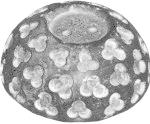
Tre-foil inlay decorated base (for linga icon?); smoothed, polished pedestal of dark red stone; National Museum of Pakistan, Karachi; After Mackay 1938: I, 411; II, pl. 107:35; Parpola, 1994, p. 218.
Lingam, grey sandstone in situ, Harappa, Trench Ai, Mound F, Pl. X (c) (After Vats). "In an earthenware jar, No. 12414, recovered from Mound F, Trench IV, Square I... in this jar, six lingams were found along with some tiny pieces of shell, a unicorn seal, an oblong grey sandstone block with polished surface, five stone pestles, a stone palette, and a block of chalcedony..." (Vats,MS, Excavations at Harappa, p. 370)
Cylindrical clay steles of 10 to 15 cms height occur in ancient fire-altars (See report by BB Lal on Kalibangan excavations).
A number of polished stone pillars were found in Dholavira. (See April 2015 published Dholavira excavation report: http://asi.nic.in/pdf_data/dholavira_excavation_report_new.pdf
These evidences of sivalinga and pillars evoke the imageries of a festival which is celebrated even today by Lingavantas, particularly in Karnataka. The festival is a continuum of the tradition which started in Sarasvati-Sindhu (Hindu) Civilization during the Bronze Age, given the evidences of the worship states in which the pillars and sivalingas are found in Dholavira and Harappa and the presence of cylindrical steles as hieroglyphs in fire-altars of Kalibangan and other archaeological sites of the civilization.
It is, thus, possible to hypothesise that the religious practices of the people of the civilization at Mohenjodaro, Harappa, Kalibangan (where a terracotta Sivalinga has been found) and Dholavira are represented by the continuum of koṇḍahabba festivals celebrated by Lingavantas.



”Within the group of religious buildings that remain in Hampi , highlighting the numerous temples , in front of which are these Shiva lingam . It is very common for Shiva lingam rock be excavated outside if there is a nearby temple , given its ritual , but here are carved on the granite rock of the hill. Its religious significance is emphasized by the appearance of small channels on which water is poured to perform rituals and offerings to Shiva . They were carved in succession during the fourteenth to sixteenth centuries , and are pieces of variable size and composition more or less complex. Centerpiece normally appears a larger lingam environment that provides a small bowl , around it a mesh peqrfecta organized lingams appear smaller and leave room for a small channel which runs central to the bowl surrounds the lingam greater. The pieces usually have a diameter of about 25cm and a height of 10 to 15cm . In some cases are screened lingam simpler or smaller, or their component parts are smaller .” (Translated from French). http://tectonicablog.com/?p=34419
Galaganatha is a village south of Varada-Tungabhadra Sangama in Haveri district. In ancient inscriptions Galaganatha is referred to as Palluni.
Galagesvaragudi is a unique experiment of Kalyani Chalukyan temple architecture. The temple is east facing and situated on the bank of river Tungabhadra. The temple tapers right from its base to the top of the Shikhara. This temple is under the care of Archaeological Survey of India.


The temple can be entered from 3 sides.

Galagesvara temple of Galaganatha.
A pillar close to temple's southern entrance. If this pattern of temple design situating skambha lingas close to the temples can be extrapolated to Dholavira times, it is possible to explain the presence of two skambhas on the Dholavira 'theatre' as memorials close to the circules of stones which may have constituted menhir-stones in memory of the departed ancestors; and hence, the two pillars might have constituted two memorial pillars venerating the departed ātman, the pitṛ-s.![]()
A pillar close to temple's southern entrance. If this pattern of temple design situating skambha lingas close to the temples can be extrapolated to Dholavira times, it is possible to explain the presence of two skambhas on the Dholavira 'theatre' as memorials close to the circules of stones which may have constituted menhir-stones in memory of the departed ancestors; and hence, the two pillars might have constituted two memorial pillars venerating the departed ātman, the pitṛ-s.

A hero-stone leaning on a Shivalinga.![]()
![]()
A collection of Shivalinga. In the back ground is river Tungabhadra river in Bellary district.I suggest that these are hieroglyphs signifying pillars of light: tã̄bṛā, tambira (Prakritam) Rebus: tamba, 'copper' (Meluhha. Indian sprachbund)See: three stumps on Sit Shamshi bronze. [kūpa -- 2, stambha -- ] G. kuvātham m. ʻ mast of a ship ʼ.(CDIAL 3403) *ṭhōmba -- . 1. G. ṭhobrũ ʻ ugly, clumsy ʼ.2. M. ṭhõb m. ʻ bare trunk, boor, childless man ʼ, thõbā m. ʻ boor, short stout stick ʼ (LM 340 < stambha -- ).(CDIAL 5514) Rebus: tamba, 'copper' (Meluhha. Indian sprachbund) Numeral three: kolmo 'three' Rebus: kolami 'smithy, forge'.The entire message of Sit Shamshi is bronze is worship of the sun. The message signifies copper metalwork. It is significant that one of the meanings to the Meluhha gloss sūrya is: copper: சூரியன் cūriyaṉ , n. < sūrya. Mountain containing copper; செம்புமலை. (W.)Sit-Shamshi (Musée du Louvre, París). Tabla de bronce que parece resumir sabiamente el ritual del antiguo Elam. Los zigurats recuerdan el arte mesopotámico, el bosque sagrado alude a la devoción semita por el árbol verde, la tinaja trae a la mente el “mar de bronce”. Los dos hombres en cuclillas hacen su ablución para celebrar la salida del Sol. Una inscripción, que lleva el nombre del rey Silhak-in-Shushinak, permite fijar su datación en el siglo XII a.C."The texts mention the "temples of the grove," cave sanctuaries where ceremonies related to the daily renewal of nature were accompanied by deposition of offerings, sacrifice and libations. The Sit Shamshi is perhaps a representation. It is also possible that this object is a commemoration of the funeral ceremonies after the disappearance of the sovereign. Indeed, this model was found near a cave, and bears an inscription in Elamite where Shilhak-Inshushinak remember his loyalty to the lord of Susa, Inshushinak. The text gives the name of the monument, the Sit Shamshi, Sunrise, which refers to the time of day during which the ceremony takes place." Source: http://www.3dsrc.com/antiquiteslouvre/index.php?rub=img&img=236&cat=10![]() Kalibangan fire-altars. In one pit, a cylindrical clay stele was found. Could such steles located in many ancient archaeological sites, denote skambha of Atharvaveda? Such stele were 30-40 cms. in height and 10-15 cms. in diameter, and formed the centrepoint of the hearths (Lal, BB 1984, Some reflections on the structural remains at Kalibangan in inIndus civilization: New perspectives, AH Dani ed.: 57).
Kalibangan fire-altars. In one pit, a cylindrical clay stele was found. Could such steles located in many ancient archaeological sites, denote skambha of Atharvaveda? Such stele were 30-40 cms. in height and 10-15 cms. in diameter, and formed the centrepoint of the hearths (Lal, BB 1984, Some reflections on the structural remains at Kalibangan in inIndus civilization: New perspectives, AH Dani ed.: 57).
Dholavira Excavation Report (April 2015) provides details of the finds of six polished stone pillars with two illustrations and a write-up:
Fig. 8.304. Freestanding columns in situ
"8.9.2.2 Free standing columns. At least six examples of freestanding columns were discovered from the excavations. Three freestanding columns are tall and slender pillars with circular cross-section and with a top resembling a phallus or they are phallic in nature. That is why most of them were found in an intentionally damaged and smashed condition. The phallus is depicted realistically with even the drawing of foreskin shown clearly. Two of these freestanding columns are found near eastern end of high street of Castle. These columns measure nearly 1.5m in height and are found at the strategic location of entering into the high street from the east gate of Castle. These two columns are placed in such a manner at the beginning of high street that they divide the street into three equal parts. The other freestanding columns of the same variety and typology, numbering four were found in a completely smashed and broken condition. Two of such columns were found in a secondary condition, fitted as a masonry of Tank A while the other one was found in a masonry in a later period structure near the western fortification of Castle. Two more examles, completely smashed and destroyed ones were also found, one near the western end of Ceremonial Ground and the second near the north gate of Castle. The destruction and desecration of these columns can be equated with that of the damage caused to the stone statue, which clearly indicates a change in ideology and traditions, customs after the Harappan phase."(pp. 589-591) http://asi.nic.in/pdf_data/dholavira_excavation_report_new.pdf
![]()
![]()
![]() A pair of Skambha in Dholavira close to kole.l'smithy, temple' ( (8-shaped stone structure): Ko. kole·l smithy, temple in Kota village. To. kwala·l Kota smithy.(DEDR 2133).Hieroglyph: tamba 'pillar'; tambu id. (Sindhi) Rebus: tamba, tã̄bṛā, tambira 'copper' (Prakritam)
A pair of Skambha in Dholavira close to kole.l'smithy, temple' ( (8-shaped stone structure): Ko. kole·l smithy, temple in Kota village. To. kwala·l Kota smithy.(DEDR 2133).Hieroglyph: tamba 'pillar'; tambu id. (Sindhi) Rebus: tamba, tã̄bṛā, tambira 'copper' (Prakritam)![]() One side of a Mohenjo-daro prism tablet (Full decipherment of the three sided inscription is embedded). What was the cargo carried on the boat? I suggest that the cargo was Meluhha metalwork -- castings and hard copper alloy ingots. Together with the pair of aquatic birds, the metalwork is with hard alloys (of copper).karaṇḍa ‘duck’ (Sanskrit) karaṛa ‘a very large aquatic bird’ (Sindhi) Rebus: करडा [karaḍā] Hard from alloy--iron, silver &c. (Marathi) Alternative:
One side of a Mohenjo-daro prism tablet (Full decipherment of the three sided inscription is embedded). What was the cargo carried on the boat? I suggest that the cargo was Meluhha metalwork -- castings and hard copper alloy ingots. Together with the pair of aquatic birds, the metalwork is with hard alloys (of copper).karaṇḍa ‘duck’ (Sanskrit) karaṛa ‘a very large aquatic bird’ (Sindhi) Rebus: करडा [karaḍā] Hard from alloy--iron, silver &c. (Marathi) Alternative:
Hieroglyph: tamar ‘palm’ (Hebrew) Rebus: tam(b)ra ‘copper’ (Santali)
dula ‘pair’ Rebus: dul ‘cast metal’ (Santali) Thus, together, dul tam(b)ra 'copper casting'.
A hero-stone leaning on a Shivalinga.


A collection of Shivalinga. In the back ground is river Tungabhadra river in Bellary district.
I suggest that these are hieroglyphs signifying pillars of light: tã̄bṛā, tambira (Prakritam) Rebus: tamba, 'copper' (Meluhha. Indian sprachbund)
See: three stumps on Sit Shamshi bronze. [kūpa -- 2, stambha -- ] G. kuvātham m. ʻ mast of a ship ʼ.(CDIAL 3403) *ṭhōmba -- . 1. G. ṭhobrũ ʻ ugly, clumsy ʼ.2. M. ṭhõb m. ʻ bare trunk, boor, childless man ʼ, thõbā m. ʻ boor, short stout stick ʼ (LM 340 < stambha -- ).(CDIAL 5514) Rebus: tamba, 'copper' (Meluhha. Indian sprachbund) Numeral three: kolmo 'three' Rebus: kolami 'smithy, forge'.
The entire message of Sit Shamshi is bronze is worship of the sun. The message signifies copper metalwork. It is significant that one of the meanings to the Meluhha gloss sūrya is: copper: சூரியன் cūriyaṉ , n. < sūrya. Mountain containing copper; செம்புமலை. (W.)
Sit-Shamshi (Musée du Louvre, París). Tabla de bronce que parece resumir sabiamente el ritual del antiguo Elam. Los zigurats recuerdan el arte mesopotámico, el bosque sagrado alude a la devoción semita por el árbol verde, la tinaja trae a la mente el “mar de bronce”. Los dos hombres en cuclillas hacen su ablución para celebrar la salida del Sol. Una inscripción, que lleva el nombre del rey Silhak-in-Shushinak, permite fijar su datación en el siglo XII a.C.
"The texts mention the "temples of the grove," cave sanctuaries where ceremonies related to the daily renewal of nature were accompanied by deposition of offerings, sacrifice and libations. The Sit Shamshi is perhaps a representation. It is also possible that this object is a commemoration of the funeral ceremonies after the disappearance of the sovereign. Indeed, this model was found near a cave, and bears an inscription in Elamite where Shilhak-Inshushinak remember his loyalty to the lord of Susa, Inshushinak. The text gives the name of the monument, the Sit Shamshi, Sunrise, which refers to the time of day during which the ceremony takes place." Source: http://www.3dsrc.com/antiquiteslouvre/index.php?rub=img&img=236&cat=10
 Kalibangan fire-altars. In one pit, a cylindrical clay stele was found. Could such steles located in many ancient archaeological sites, denote skambha of Atharvaveda? Such stele were 30-40 cms. in height and 10-15 cms. in diameter, and formed the centrepoint of the hearths (Lal, BB 1984, Some reflections on the structural remains at Kalibangan in inIndus civilization: New perspectives, AH Dani ed.: 57).
Kalibangan fire-altars. In one pit, a cylindrical clay stele was found. Could such steles located in many ancient archaeological sites, denote skambha of Atharvaveda? Such stele were 30-40 cms. in height and 10-15 cms. in diameter, and formed the centrepoint of the hearths (Lal, BB 1984, Some reflections on the structural remains at Kalibangan in inIndus civilization: New perspectives, AH Dani ed.: 57).Dholavira Excavation Report (April 2015) provides details of the finds of six polished stone pillars with two illustrations and a write-up:
Fig. 8.304. Freestanding columns in situ
"8.9.2.2 Free standing columns. At least six examples of freestanding columns were discovered from the excavations. Three freestanding columns are tall and slender pillars with circular cross-section and with a top resembling a phallus or they are phallic in nature. That is why most of them were found in an intentionally damaged and smashed condition. The phallus is depicted realistically with even the drawing of foreskin shown clearly. Two of these freestanding columns are found near eastern end of high street of Castle. These columns measure nearly 1.5m in height and are found at the strategic location of entering into the high street from the east gate of Castle. These two columns are placed in such a manner at the beginning of high street that they divide the street into three equal parts. The other freestanding columns of the same variety and typology, numbering four were found in a completely smashed and broken condition. Two of such columns were found in a secondary condition, fitted as a masonry of Tank A while the other one was found in a masonry in a later period structure near the western fortification of Castle. Two more examles, completely smashed and destroyed ones were also found, one near the western end of Ceremonial Ground and the second near the north gate of Castle. The destruction and desecration of these columns can be equated with that of the damage caused to the stone statue, which clearly indicates a change in ideology and traditions, customs after the Harappan phase."(pp. 589-591) http://asi.nic.in/pdf_data/dholavira_excavation_report_new.pdf


 A pair of Skambha in Dholavira close to kole.l'smithy, temple' ( (8-shaped stone structure): Ko. kole·l smithy, temple in Kota village. To. kwala·l Kota smithy.(DEDR 2133).
A pair of Skambha in Dholavira close to kole.l'smithy, temple' ( (8-shaped stone structure): Ko. kole·l smithy, temple in Kota village. To. kwala·l Kota smithy.(DEDR 2133).Hieroglyph: tamba 'pillar'; tambu id. (Sindhi) Rebus: tamba, tã̄bṛā, tambira 'copper' (Prakritam)
 One side of a Mohenjo-daro prism tablet (Full decipherment of the three sided inscription is embedded). What was the cargo carried on the boat? I suggest that the cargo was Meluhha metalwork -- castings and hard copper alloy ingots. Together with the pair of aquatic birds, the metalwork is with hard alloys (of copper).
One side of a Mohenjo-daro prism tablet (Full decipherment of the three sided inscription is embedded). What was the cargo carried on the boat? I suggest that the cargo was Meluhha metalwork -- castings and hard copper alloy ingots. Together with the pair of aquatic birds, the metalwork is with hard alloys (of copper).karaṇḍa ‘duck’ (Sanskrit) karaṛa ‘a very large aquatic bird’ (Sindhi) Rebus: करडा [karaḍā] Hard from alloy--iron, silver &c. (Marathi) Alternative:
Hieroglyph: tamar ‘palm’ (Hebrew) Rebus: tam(b)ra ‘copper’ (Santali)
dula ‘pair’ Rebus: dul ‘cast metal’ (Santali) Thus, together, dul tam(b)ra 'copper casting'.
Śrīvatsa, an abiding cultural, metallurgical wealth continuum![]() ŚrīvatsaSilver coin of the Kuninda Kingdom, c. 1st century BCE. Obv: Deer standing right, crowned by two cobras, attended byLakshmi holding a lotus flower. Legend in Prakrit (Brahmi script, from left to right): Rajnah Kunindasya Amoghabhutisya maharajasya ("Great King Amoghabhuti, of the Kunindas"). Rev: Stupa surmounted by the Buddhist symbol triratna, and surrounded by a swastika, a "Y" symbol, and a tree in railing. Legend in Kharoshti script, from righ to left: Rana Kunidasa Amoghabhutisa Maharajasa, ("Great King Amoghabhuti, of the Kunindas").
ŚrīvatsaSilver coin of the Kuninda Kingdom, c. 1st century BCE. Obv: Deer standing right, crowned by two cobras, attended byLakshmi holding a lotus flower. Legend in Prakrit (Brahmi script, from left to right): Rajnah Kunindasya Amoghabhutisya maharajasya ("Great King Amoghabhuti, of the Kunindas"). Rev: Stupa surmounted by the Buddhist symbol triratna, and surrounded by a swastika, a "Y" symbol, and a tree in railing. Legend in Kharoshti script, from righ to left: Rana Kunidasa Amoghabhutisa Maharajasa, ("Great King Amoghabhuti, of the Kunindas").
Kuninda (or Kulinda in ancient literature) was an ancient centralHimalayan kingdom from around the 2nd century BCE to the 3rd century, located in the modern state of Uttarakhand and southern areas of Himachal in northern India.
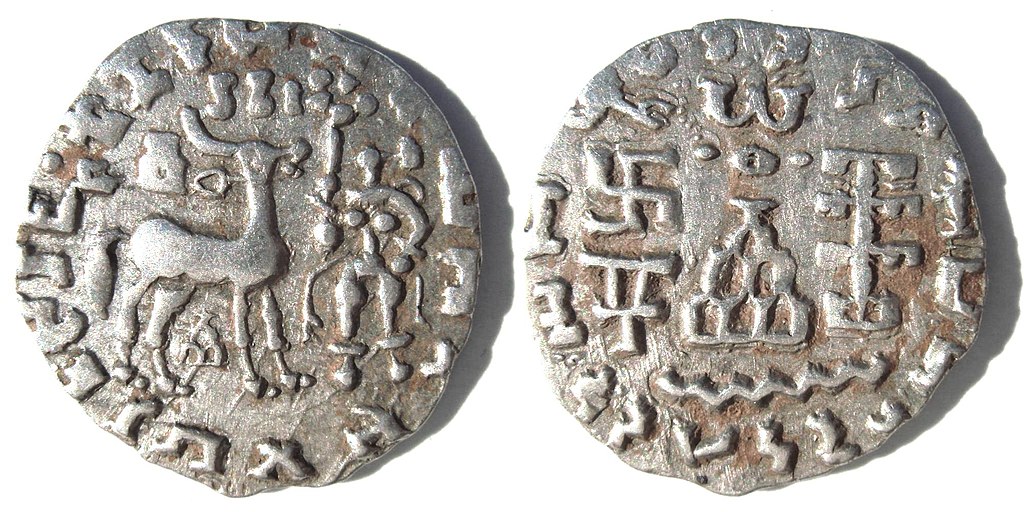
![Triratna symbol on the reverse (left field) of a coin of the Indo-Scythian king Azes II (r.c. 35-12 BCE):]() Triratna (Srivatsa) symbol on the reverse (left field) of a coin of the Indo-Scythian king Azes II (r.c. 35-12 BCE
Triratna (Srivatsa) symbol on the reverse (left field) of a coin of the Indo-Scythian king Azes II (r.c. 35-12 BCE
![]() Coin of Zeionises (c. 10 BCE – 10 CE). Obv: King on horseback holding whip, with bow behind. Corrupted Greek legend MANNOLOU UIOU SATRAPY ZEIONISOU "Satrap Zeionises, son of Manigul". Buddhist Triratna symbol. Rev:King on the left, receiving a crown from a city goddess holding a cornucopia. Kharoshthi legend MANIGULASA CHATRAPASA PUTRASA CHATRAPASA JIHUNIASA "Satrap Zeionises, son of Satrap Manigul". South Chach mint.
Coin of Zeionises (c. 10 BCE – 10 CE). Obv: King on horseback holding whip, with bow behind. Corrupted Greek legend MANNOLOU UIOU SATRAPY ZEIONISOU "Satrap Zeionises, son of Manigul". Buddhist Triratna symbol. Rev:King on the left, receiving a crown from a city goddess holding a cornucopia. Kharoshthi legend MANIGULASA CHATRAPASA PUTRASA CHATRAPASA JIHUNIASA "Satrap Zeionises, son of Satrap Manigul". South Chach mint.
Zeionises was an Indo-Scythian satrap of the area of southern Chach (Kashmir) for king Azes II.Necklaces with a number of pendants
aṣṭamangalaka hāra
aṣṭamangalaka hāra depicted on a pillar of a gateway(toran.a) at the stupa of Sanchi, Central India, 1st century BCE. [After VS Agrawala, 1969, Thedeeds of Harsha (being a cultural study of Bāṇa’s Harṣacarita, ed. By PK Agrawala, Varanasi:fig. 62] The hāra or necklace shows a pair of fish signs together with a number of motifsindicating weapons (cakra, paraśu,an:kuśa), including a device that parallels the standard device normally shown in many inscribed objects of SSVC in front of the one-horned bull. •
Necklaces with a number of pendants
aṣṭamangalaka hāra
aṣṭamangalaka hāra depicted on a pillar of a gateway(toran.a) at the stupa of Sanchi, Central India, 1st century BCE. [After VS Agrawala, 1969, Thedeeds of Harsha (being a cultural study of Bāṇa’s Harṣacarita, ed. By PK Agrawala, Varanasi:fig. 62] The hāra or necklace shows a pair of fish signs together with a number of motifsindicating weapons (cakra, paraśu,an:kuśa), including a device that parallels the standard device normally shown in many inscribed objects of SSVC in front of the one-horned bull.
•
(cf. Marshall, J. and Foucher,The Monuments of Sanchi, 3 vols., Callcutta, 1936, repr. 1982, pl. 27).The first necklace has eleven and the second one has thirteen pendants (cf. V.S. Agrawala,1977, Bhāratīya Kalā , Varanasi, p. 169); he notes the eleven pendants as:sun,śukra, padmasara,an:kuśa, vaijayanti, pan:kaja,mīna-mithuna,śrīvatsa, paraśu,
darpaṇa and kamala. "The axe (paraśu) and an:kuśa pendants are common at sites of north India and some oftheir finest specimens from Kausambi are in the collection of Dr. MC Dikshit of Nagpur."(Dhavalikar, M.K., 1965, Sanchi: A cultural Study , Poona, p. 44; loc.cit. Dr.Mohini Verma,1989, Dress and Ornaments in Ancient India: The Maurya and S'un:ga Periods,Varanasi, Indological Book House, p. 125).

[CBK001] Karshapana of Chutus - Mulananda
, Lead karshapana. Zebu. Brahmi legend: Maharathi putasa sudakana (kanhasa) Krishna Six arched hill with crescent, wavy line below, nandipada,
poLa 'zebu' rebus: poLa 'magnetite ferrite ore'meTTu 'mound' rebus: meD 'iron' kuThAru 'crucible' rebus: kuThAru 'armourer'kANDa 'water' rebus: kaNDa 'implements'kammaṭa 'mint'sattva 'svastika' rebus: jasta 'zinc'
Taxila, Uninscribed die-struck Coin (200-150 BC), MIGIS-4 type 578, 3.94g. Obv: Lotus standard flanked by banners in a railing, with two small three-arched hill symbols on either side. Rev: Three-arched hill with crescent above a bold 'open cross' symbol.
![FIG. 20. ANCIENT INDIAN COIN. (Archæological Survey of India, vol. x., pl. ii., fig. 8.)]() Fig. 20. Ancient Indian Coin.
Fig. 20. Ancient Indian Coin.
The Migration of Symbols, by Goblet d'Alviella, [1894
(Archæological Survey of India, vol. x., pl. ii., fig. 8.)
kuTi 'tree' rebus: kuThi 'smelter'
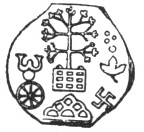 Fig. 20. Ancient Indian Coin.
Fig. 20. Ancient Indian Coin.The Migration of Symbols, by Goblet d'Alviella, [1894
(Archæological Survey of India, vol. x., pl. ii., fig. 8.)
kuTi 'tree' rebus: kuThi 'smelter'
![]() Ayagapatta, Kankali Tila, Mathura.
Ayagapatta, Kankali Tila, Mathura.
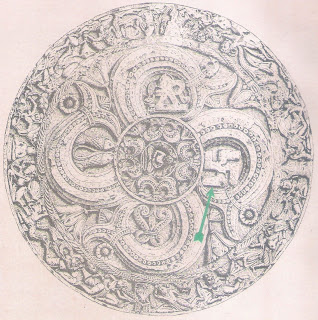 Ayagapatta, Kankali Tila, Mathura.
Ayagapatta, Kankali Tila, Mathura.![An ayagapata or Jain homage tablet, with small figure of a tirthankara in the centre, from Mathura]() The piece is now in the Lucknow Museum.
The piece is now in the Lucknow Museum.
![An ayagapata or Jain homage tablet, with small figure of a tirthankara in the centre and inscription below, from Mathura]() An ayagapata or Jain homage tablet, with small figure of a tirthankara in the centre and inscription below, from Mathura. "Photograph taken by Edmund William Smith in 1880s-90s of a Jain homage tablet. The tablet was set up by the wife of Bhadranadi, and it was found in December 1890 near the centre of the mound of the Jain stupa at Kankali Tila. Mathura has extensive archaeological remains as it was a large and important city from the middle of the first millennium onwards. It rose to particular prominence under the Kushans as the town was their southern capital. The Buddhist, Brahmanical and Jain faiths all thrived at Mathura, and we find deities and motifs from all three and others represented in sculpture. In reference to this photograph in the list of photographic negatives, Bloch wrote that, "The technical name of such a panel was ayagapata [homage panel]." The figure in the centre is described as a Tirthamkara, a Jain prophet. The piece is now in the Lucknow Museum." http://www.bl.uk/onlinegallery/onlineex/apac/photocoll/a/largeimage58907.html
An ayagapata or Jain homage tablet, with small figure of a tirthankara in the centre and inscription below, from Mathura. "Photograph taken by Edmund William Smith in 1880s-90s of a Jain homage tablet. The tablet was set up by the wife of Bhadranadi, and it was found in December 1890 near the centre of the mound of the Jain stupa at Kankali Tila. Mathura has extensive archaeological remains as it was a large and important city from the middle of the first millennium onwards. It rose to particular prominence under the Kushans as the town was their southern capital. The Buddhist, Brahmanical and Jain faiths all thrived at Mathura, and we find deities and motifs from all three and others represented in sculpture. In reference to this photograph in the list of photographic negatives, Bloch wrote that, "The technical name of such a panel was ayagapata [homage panel]." The figure in the centre is described as a Tirthamkara, a Jain prophet. The piece is now in the Lucknow Museum." http://www.bl.uk/onlinegallery/onlineex/apac/photocoll/a/largeimage58907.html![]()
![]() View of the Jaina stupa excavated at Kankali Tila, Mathura.
View of the Jaina stupa excavated at Kankali Tila, Mathura.![]() Manoharpura. Svastika. Top of āyāgapaṭa. Red Sandstone. Lucknow State Museum. (Scan no.0053009, 0053011, 0053012 ) See: https://www.academia.edu/11522244/A_temple_at_Sanchi_for_Dhamma_by_a_k%C4%81ra%E1%B9%87ik%C4%81_sanghin_guild_of_scribes_in_Indus_writing_cipher_continuum
Manoharpura. Svastika. Top of āyāgapaṭa. Red Sandstone. Lucknow State Museum. (Scan no.0053009, 0053011, 0053012 ) See: https://www.academia.edu/11522244/A_temple_at_Sanchi_for_Dhamma_by_a_k%C4%81ra%E1%B9%87ik%C4%81_sanghin_guild_of_scribes_in_Indus_writing_cipher_continuum
![]()
Ayagapata (After Huntington)
![]()
Jain votive tablet from Mathurå. From Czuma 1985, catalogue number 3. Fish-tail is the hieroglyph together with svastika hieroglyph, fish-pair hieroglyph, safflower hieroglyph, cord (tying together molluscs and arrow?)hieroglyph multiplex, lathe multiplex (the standard device shown generally in front of a one-horned young bull on Indus Script corpora), flower bud (lotus) ligatured to the fish-tail. All these are venerating hieroglyphs surrounding the Tirthankara in the central medallion.

The piece is now in the Lucknow Museum.

An ayagapata or Jain homage tablet, with small figure of a tirthankara in the centre and inscription below, from Mathura. "Photograph taken by Edmund William Smith in 1880s-90s of a Jain homage tablet. The tablet was set up by the wife of Bhadranadi, and it was found in December 1890 near the centre of the mound of the Jain stupa at Kankali Tila. Mathura has extensive archaeological remains as it was a large and important city from the middle of the first millennium onwards. It rose to particular prominence under the Kushans as the town was their southern capital. The Buddhist, Brahmanical and Jain faiths all thrived at Mathura, and we find deities and motifs from all three and others represented in sculpture. In reference to this photograph in the list of photographic negatives, Bloch wrote that, "The technical name of such a panel was ayagapata [homage panel]." The figure in the centre is described as a Tirthamkara, a Jain prophet. The piece is now in the Lucknow Museum." http://www.bl.uk/onlinegallery/onlineex/apac/photocoll/a/largeimage58907.html

 View of the Jaina stupa excavated at Kankali Tila, Mathura.
View of the Jaina stupa excavated at Kankali Tila, Mathura.
Manoharpura. Svastika. Top of āyāgapaṭa. Red Sandstone. Lucknow State Museum. (Scan no.0053009, 0053011, 0053012 ) See: https://www.academia.edu/11522244/A_temple_at_Sanchi_for_Dhamma_by_a_k%C4%81ra%E1%B9%87ik%C4%81_sanghin_guild_of_scribes_in_Indus_writing_cipher_continuum

Ayagapata (After Huntington)

Jain votive tablet from Mathurå. From Czuma 1985, catalogue number 3. Fish-tail is the hieroglyph together with svastika hieroglyph, fish-pair hieroglyph, safflower hieroglyph, cord (tying together molluscs and arrow?)hieroglyph multiplex, lathe multiplex (the standard device shown generally in front of a one-horned young bull on Indus Script corpora), flower bud (lotus) ligatured to the fish-tail. All these are venerating hieroglyphs surrounding the Tirthankara in the central medallion.
Kushana period, 1st century C.E.From Mathura Red Sandstone 89x92cm
![]()
"Note that both begin with a lucky svastika. The top line reads 卐 vīrasu bhikhuno dānaṃ - i.e. "the donation of Bhikkhu Vīrasu." The lower inscription also ends with dānaṃ, and the name in this case is perhaps pānajāla (I'm unsure about jā). Professor Greg Schopen has noted that these inscriptions recording donations from bhikkhus and bhikkhunis seem to contradict the traditional narratives of monks and nuns not owning property or handling money. The last symbol on line 2 apparently represents the three jewels, and frequently accompanies such inscriptions...Müller [in Schliemann(2), p.346-7] notes that svasti occurs throughout 'the Veda' [sic; presumably he means the Ṛgveda where it appears a few dozen times]. It occurs both as a noun meaning 'happiness', and an adverb meaning 'well' or 'hail'. Müller suggests it would correspond to Greek εὐστική (eustikē) from εὐστώ (eustō), however neither form occurs in my Greek Dictionaries. Though svasti occurs in the Ṛgveda, svastika does not. Müller traces the earliest occurrence of svastika to Pāṇini's grammar, the Aṣṭādhyāyī, in the context of ear markers for cows to show who their owner was. Pāṇini discusses a point of grammar when making a compound using svastika and karṇa, the word for ear. I've seen no earlier reference to the word svastika, though the symbol itself was in use in the Indus Valley civilisation.[unquote]
1. Cunningham, Alexander. (1854) The Bhilsa topes, or, Buddhist monuments of central India : comprising a brief historical sketch of the rise, progress, and decline of Buddhism; with an account of the opening and examination of the various groups of topes around Bhilsa. London : Smith, Elder. [possibly the earliest recorded use of the word swastika in English].
2. Schliemann, Henry. (1880). Ilios : the city and country of the Trojans : the results of researches and discoveries on the site of Troy and through the Troad in the years 1871-72-73-78-79. London : John Murray.
http://jayarava.blogspot.in/2011/05/svastika.html
![]()

"Note that both begin with a lucky svastika. The top line reads 卐 vīrasu bhikhuno dānaṃ - i.e. "the donation of Bhikkhu Vīrasu." The lower inscription also ends with dānaṃ, and the name in this case is perhaps pānajāla (I'm unsure about jā). Professor Greg Schopen has noted that these inscriptions recording donations from bhikkhus and bhikkhunis seem to contradict the traditional narratives of monks and nuns not owning property or handling money. The last symbol on line 2 apparently represents the three jewels, and frequently accompanies such inscriptions...Müller [in Schliemann(2), p.346-7] notes that svasti occurs throughout 'the Veda' [sic; presumably he means the Ṛgveda where it appears a few dozen times]. It occurs both as a noun meaning 'happiness', and an adverb meaning 'well' or 'hail'. Müller suggests it would correspond to Greek εὐστική (eustikē) from εὐστώ (eustō), however neither form occurs in my Greek Dictionaries. Though svasti occurs in the Ṛgveda, svastika does not. Müller traces the earliest occurrence of svastika to Pāṇini's grammar, the Aṣṭādhyāyī, in the context of ear markers for cows to show who their owner was. Pāṇini discusses a point of grammar when making a compound using svastika and karṇa, the word for ear. I've seen no earlier reference to the word svastika, though the symbol itself was in use in the Indus Valley civilisation.[unquote]
1. Cunningham, Alexander. (1854) The Bhilsa topes, or, Buddhist monuments of central India : comprising a brief historical sketch of the rise, progress, and decline of Buddhism; with an account of the opening and examination of the various groups of topes around Bhilsa. London : Smith, Elder. [possibly the earliest recorded use of the word swastika in English].
2. Schliemann, Henry. (1880). Ilios : the city and country of the Trojans : the results of researches and discoveries on the site of Troy and through the Troad in the years 1871-72-73-78-79. London : John Murray.
http://jayarava.blogspot.in/2011/05/svastika.html

Khandagiri caves (2nd cent. BCE) Cave 3 (Jaina Ananta gumpha). Fire-altar?, śrivatsa, svastika(hieroglyphs) (King Kharavela, a Jaina who ruled Kalinga has an inscription dated 161 BCE) contemporaneous with Bharhut and Sanchi and early Bodhgaya.
![Related image]()
śrivatsa symbol [with its hundreds of stylized variants, depicted on Pl. 29 to 32] occurs in Bogazkoi (Central Anatolia) dated ca. 6th to 14th cent. BCE on inscriptions Pl. 33, Nandipāda-Triratna at: Bhimbetka, Sanchi, Sarnath and Mathura] Pl. 27, Svastika symbol: distribution in cultural periods] The association of śrivatsa with ‘fish’ is reinforced by the symbols binding fish in Jaina āyāgapaṭas (snake-hood?) of Mathura (late 1st cent. BCE). śrivatsa symbol seems to have evolved from a stylied glyph showing ‘two fishes’. In the Sanchi stupa, the fish-tails of two fishes are combined to flank the ‘śrivatsa’ glyph. In a Jaina āyāgapaṭa, a fish is ligatured within the śrivatsa glyph, emphasizing the association of the ‘fish’ glyph with śrivatsa glyph.
(After Plates in: Savita Sharma, 1990, Early Indian symbols, numismatic evidence, Delhi, Agama Kala Prakashan; cf. Shah, UP., 1975, Aspects of Jain Art and Architecture, p.77)

śrivatsa symbol [with its hundreds of stylized variants, depicted on Pl. 29 to 32] occurs in Bogazkoi (Central Anatolia) dated ca. 6th to 14th cent. BCE on inscriptions Pl. 33, Nandipāda-Triratna at: Bhimbetka, Sanchi, Sarnath and Mathura] Pl. 27, Svastika symbol: distribution in cultural periods] The association of śrivatsa with ‘fish’ is reinforced by the symbols binding fish in Jaina āyāgapaṭas (snake-hood?) of Mathura (late 1st cent. BCE). śrivatsa symbol seems to have evolved from a stylied glyph showing ‘two fishes’. In the Sanchi stupa, the fish-tails of two fishes are combined to flank the ‘śrivatsa’ glyph. In a Jaina āyāgapaṭa, a fish is ligatured within the śrivatsa glyph, emphasizing the association of the ‘fish’ glyph with śrivatsa glyph.
(After Plates in: Savita Sharma, 1990, Early Indian symbols, numismatic evidence, Delhi, Agama Kala Prakashan; cf. Shah, UP., 1975, Aspects of Jain Art and Architecture, p.77)
![]()
![]() Section of a coping rail. 30.5x122 cm. 2nd cent. BCE Sunga. Bharhut. Note the tablet held between the hypertexts of fish-fins; it is a definitive semantic determinant of sippi who has the competence to write on, sculpt with metal.
Section of a coping rail. 30.5x122 cm. 2nd cent. BCE Sunga. Bharhut. Note the tablet held between the hypertexts of fish-fins; it is a definitive semantic determinant of sippi who has the competence to write on, sculpt with metal.![]()
![]()
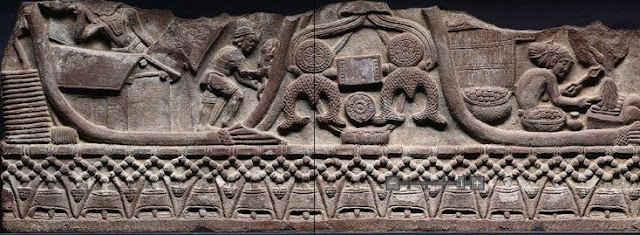


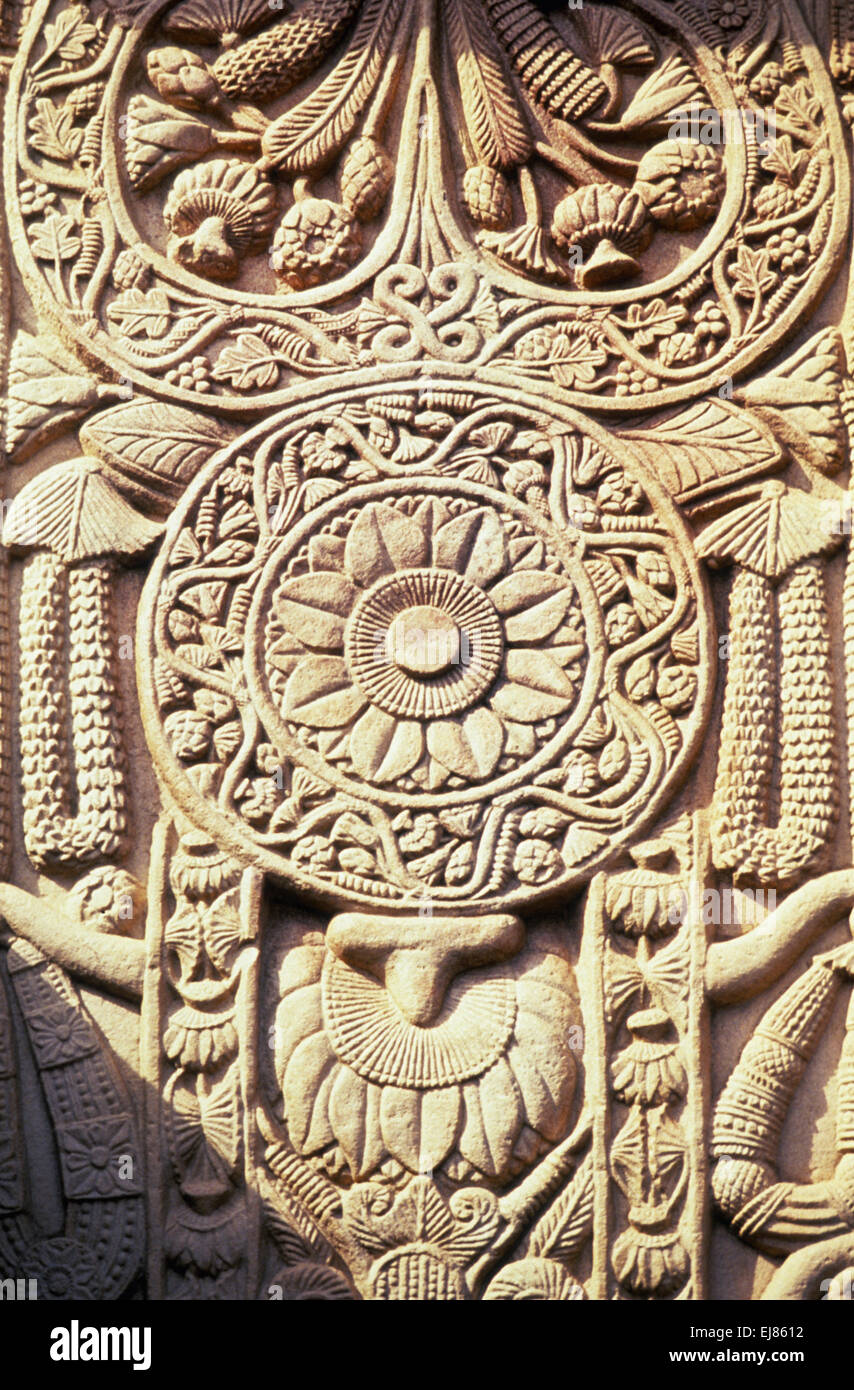
Bharhut stupa torana replicated on a Bharhut frieze. The centerpiece mollusc hypertext is flanked by two srivatsa hypertexts. The gateway entrance is adorned with a garland.
Bharhut stupa torana replicated on a Bharhut frieze. The centerpiece mollusc hypertext is flanked by two srivatsa hypertexts. The gateway entrance is adorned with a garland.
Bharhut gateway, Gateway model in ivory of Begram, Sanchi gateway (all three adorned with ayo kammaṭa )
The hypertexts of the following frieze signify a mint:
![Related image]()
Amaravati. British Museum. Throne under the tree. Coins in the bottom register. kuTi 'tree' rebus: kuThi 'smelter'
meD 'step' rebus: meD 'iron'.
पट n. a thatch or roof (= पटल) L.
పటహము (p. 695) paṭahamu paṭahamu. [Skt.] n. A kettle drum, a war drum. తప్పెట. पटह [p= 579,2]m. (rarely n. or f(ई).) a kettledrum ,
Hieroglyph: Hood of a serpent:
paṭṭaḍi signifies 'workshop' . The hypertext is composed of paṭṭa, paṭa slab + aḍi'foot' hieroglyphs which recur oj many sculptural friezes of Amaravati, Sanchi, Bharhut.
Vikalpa: پاتا pātā پاتا pātā, s.f. (6th) The funeral service (from A فاتحه ) (E.) Sing. and Pl.; (W.) Pl. پاتاوي pātāwī. پاتا کول pātā kawul, or پاتا ویل pātā wa-yal, verb trans. To offer up prayers for the dead, to perform the funeral service, to make an exordium.
khambhaṛā 'fish-fin' rebus: kammaṭa 'mint, coiner, coinage' PLUS dula 'pair' rebus: dul 'metalcasting' PLUS aya 'fish' rebus: aya 'iron' ayas 'alloy metal'. Thus, the hypertext message is: dul aya kammaṭa 'cast metal mint'
![Naga King]() Drawing of two medallions (probably the front and back of the same piece) showing (a) Naga king surrounded by women (b) lotus medallion. [WD1061, folio 77]
Drawing of two medallions (probably the front and back of the same piece) showing (a) Naga king surrounded by women (b) lotus medallion. [WD1061, folio 77]
Copyright © The British Library Board
Inscribed: 6ft.1.5in. by 3ft.3in. No.59. H.H. August 1817
The wheel on Amaravati pillar signifies dhamma cakra. The rebus word is dhmā 'bellows blower'. The lotus flower in the lower register is tāmarasa 'lotus' rebus: tāmra 'copper'.![Image result for Drawing of two medallions (perhaps the inner and outer face of the same piece). [WD1061, folio 45] amaravati]()
![]() Sanchi torana.धम [p= 509,3] mfn. blowing , melting (ifc. ; cf. करं- , खरिं- , जलं- &c )
Sanchi torana.धम [p= 509,3] mfn. blowing , melting (ifc. ; cf. करं- , खरिं- , जलं- &c )
धमक [p= 509,3] m. " a blower " , blacksmith (as blowing the forge) Un2. ii , 35 Sch.
धम-धम [p= 509,3]m. " blower " , N. of a demon that causes disease Hariv.
धम-धमा ind. blowing repeatedly or the sort of sound made by blowing with a bellows or trumpet MW.
धम्मल [p= 510,1] m. the breast ornamented with gold or jewels (cf. °मिल्ल) W. (This semantics explain why Srivatsa is shown on the chest of Vishnu, Tirthankara).
ध्मा a[p= 509,3] or धम् cl.1 P. ध्/अमति (A1. °ते Up. MBh. ; p. ध्मान्तस् = धमन्तस् BhP. x , 12 , 7 ; perf. दध्मौ , 3. pl. A1. °मिरे MBh. ;aor. अध्मासीत् Ka1v. ; Prec. ध्मायात् or ध्मेयात् Gr. ; fut. धमिष्यति MBh. ; ध्मास्यति,ध्माता Gr. ; ind.p. -ध्म्/आय Br. ) to blow (either intrans. as wind [applied also to the bubbling सोम RV. ix , 73] or trans. as, to blow a conch-shell or any wind instrument) RV. &c ; to blow into (loc.) MBh. l , 813 ; to melt or manufacture (metal) by blowing RV. &c ; to blow or cast away MBh. v , 7209 : Pass. धम्यते , ep. also °ति , ध्माय्/अते , °ति ( S3Br. MBh. ) to be blown&c : Caus. ध्मापयति MBh. (aor. अदिध्मपत् Gr. ; Pass. ध्माप्यते MBh. ) to cause to blow or melt ; to consume by fire , reduce to cinder MBh. Sus3r. : Desid. दिध्नासति Gr.: Intens. देध्मीयते Pa1n2. 7-4 , 31 ;
दाध्मायते , p. °यमान being violently blown (conch-shell) BhP. i , 11 , 2. [cf. Slav. dumo " smoke "]![]()
Location: India Site: India Monument/Object: architectural fragment, lintel and pillars Current Location: Sarnath Site Museum, Uttar Pradesh, India Photo Depicts: left pillar, side 1 (arbitrary), upper half Period: Sunga and Related Periods
Date: 2nd - 1st century BCE Material: sandstone, pink Scan Number: 11614 Photo Date: 1984 Image Source: Huntington Archive
On this pillar, the two fish-fins are attached to a makara clearly signifying in Indus Script cipher, adhmakara 'forge-blower' dhamaka 'blacksmith' of akammaṭa 'mint, coiner, coinage'.
.
![]() Location: India
Location: IndiaSite: India Monument/Object: architectural fragment Current Location: Amaravati Site Museum, Amaravati, Andhra Pradesh, India Subject: winged lion Period: Satavahana
Date: 1st century BCE - 1st century CE Material: stone Scan Number: 21348 Photo Date: 1984 Image Source: Huntington Archive
kambha 'wing' rebus: kammata 'mint, coiner, coiinage' kola 'tiger' rebus: kolhe 'smelter' kole.l 'smithy, forge' kol 'working in iron'
Amaravati. British Museum. Throne under the tree. Coins in the bottom register. kuTi 'tree' rebus: kuThi 'smelter'
meD 'step' rebus: meD 'iron'.
paṭa 'slab, turban, throne' PLUS aḍi 'foot' rebus: anvil PLUS dula 'two' rebus: dul 'metal casting'.
Thus the hypertext paṭṭaḍi is a metalcasting anvil, workshop.
Ta. aṭi foot, footprint, base, bottom, source, origin; aṭimai slavery, servitude, slave, servant, devotee; aṭitti, aṭicci maidservant; aṭiyavaṉ, aṭiyāṉ, aṭiyōṉ slave, devotee. Ma. aṭi sole of foot, footstep, measure of foot, bottom, base; aṭima slavery, slave, feudal dependency; aṭiyān slave, servant; fem. aṭiyātti. Ko. aṛy foot (measure); ac place below; acgaṛ place beneath an object, position after the first in a row; ac mog younger son. To.oṛy foot. Ka. aḍi foot, measure of foot, step, pace, base, bottom, under; aḍime slavery; aḍiya slave. Koḍ. aḍi place below, down. Tu. aḍi bottom, base; kār aḍi footsole, footstep; aḍi kai palm of the hand. Te. aḍugu foot, footstep, footprint, step, pace, measure of a foot, bottom, basis; aḍime slavery, slave, bondman; aḍiyãḍu slave, servant; aḍi-gaṟṟa sandal, wooden shoe. Ga. (S.2 ) aḍugu footstep (< Te.). Go. (G.) aḍi beneath; (Mu.) aḍit below; aḍita lower; aṛke below; (Ma.) aḍita, aḍna lower; (M.) aḍ(ḍ)i below, low; (L.) aḍī down; (Ko.) aṛgi underneath; aṛgita lower (Voc. 33). Konḍa aḍgi below, underneath; aḍgiR(i) that which is underneath; aḍgiRaṇḍ from below, from the bottom (DEDR 72)
paṭa 'slab, throne' rebus: పటసాల (p. 695) paṭasāla paṭa-sāla. [Tel.] n. A hall or courtyard. Rebus: paṭṭaḍi 'workshop'
aḍi 'feet' (Note the feet shown below the fiery pillar on Amaravati sculptural frieze).paṭa पट । शासनपत्रम्, परिणाहः m. a slab, tablet, plate (of metal, for inscription or engraving of royal edicts, grants, etc.); a deed, a title-deed (of land), a deed of lease; a superficies, the width (of a board, piece of cloth, or the like); ˚ -- a chair, a throne; a tiara, a diadem; i.q. paṭh in all its senses. -boḍu -; । विस्तृतपरिणाहः adj. (f. -büdü ; ), of great width, very wide. -holu ; । वक्रपरिणाहः adj. (f. -hüjü -ह; ), (of something flat) having a crooked, or uneven, width. paṭa-rönī पट-रा&above;नी । महिषी (महाराज्ञी ) f. a queen (decorated with a tiara), the principal wife of a king (K. 73, 1132). paṭuku paṭuku पटुकु; । परिणाहसंबन्धी, दानपत्रादिसंबन्धी adj. (f. paṭücü), of, or belonging to, a title-deed; of, or belonging to, width. (Kashmiri)
.పట్టము (p. 696) paṭṭamu paṭṭamu. [Skt.] n. A gold band or fillet tied on the forehead of one at the time of his coronation
as king, పట్టాభిషేక కాలమున నొసటకట్టెడుపట్టె. A diadem.
Silk thread, పట్టుమాలు. The bark of a tree, చెట్టుమీదిపట్ట. A grant or lease granted by asking to the ryots, రాజు రైతులకిచ్చు పట్టా.
A title, బిరుదు.
A grade or step in genealogy. A kingdom, రాజ్యము. అతనికి ప్రతాప సింహుడనే పట్టము
పట్టడ (p. 696) paṭṭaḍa paṭṭaḍu. [Tel.] n. A smithy, a shop. కుమ్మరి వడ్లంగి మొదలగువారు పనిచేయు చోటు.
పటకారు (p. 695) paṭakāru paṭakāru. [Tel. పట్టు+కారు.] n. Tongs, great pincers.
கொல்லன்பட்டடை kollaṉ-paṭṭaṭai
, n. < கொல்லன் +. Anvil; அடைகல். (C. G.) சேகரம்பட்டடை cēkaram-paṭṭaṭai
, n. < சேகரம்¹ +. 1. Village granary of a big land- lord; நிலச்சுவான்தாருக்குரிய கிராமக்களஞ்சியம். Rd. 2. The heap of grain gathered from the various threshing-floors of a landlord; ஒருவருக்குச் சொந்த மான பல களத்திலிருந்து ஒன்றுகூட்டிய நெற்குவியல். Tj.பட்டடை¹ paṭṭaṭai, n. prob. படு¹- + அடை¹-. 1. [T. paṭṭika, K. paṭṭaḍe.] Anvil; அடைகல். (பிங்.) சீரிடங்காணி னெறிதற்குப் பட்ட டை (குறள், 821). 2. [K. paṭṭaḍi.] Smithy, forge; கொல்லன் களரி. 3. Stock, heap, pile, as of straw, firewood or timber; குவியல். (W .) 4. Corn-rick, enclosure of straw for grain, wattle and daub, granary; தானியவுறை. (W .) 5. Layer or bed of olas for grain; தானியமிடுற்கு ஓலைகளாலமைத்த படுக்கை. (W .) 6. Anything held against another, as a support in driving a nail; prop to keep a thing from falling or moving; ஆணி முதலியன செல்லுதற்கு அடியிலிருந்து தாங்குங் கருவி. (W .) 7. Frame of timbers to place under a dhoney when ashore, to keep it from the ground; கரையிலிருக்கும்போது பூமி யிற் பதியாதபடி அடியில் வைக்குந் தோணிதாங்கி. (W .) 8. Support for the head in place of a pillow; தலையணையாக உதவும் மணை. (W .) 9. Piece of board temporarily used as a seat; உட் காரும் பலகை. (W .) 10. Plank used for crossin a channel; கால்வாய் கடத்தற்கு உதவும் பலகை. (W .) 11. The platform of the car that carries the idol; வாகனத்தட்டு. Loc. 12. Block of wood provided with iron-tubes for explosion of gun-powder; அதிர்வேட்டுக் குழாய்கள் பதிக்கப்பட்ட கட்டை. Loc. 13. Repeated explosion of gun-powder stuffed in iron-tubes; தொடர்ந்து வெடிக்கும் அதிர்வேட்டு. 14. A layer or course of earthwork, as in raising mud-wall; சுவரிலிடும் மண்படை. Loc. 15. Portion allowed to ploughmen from the proceeds of a harvest; குடிவாரம். Loc. 16. Cultivation, irrigation; சாகுபடி செய்கை. பட்டடைக்குத் தண்ணீர் இறைக்க. (W .) 17. Plot of wet land cultivated mainly by lift-irrigation; இறைப்புப் பாசனமுள்ள நன் செய்த் தாக்கு. Loc. 18. (Mus.) The fifth note of the gamut; ஐந்தாம் சுரமாகிய இளியிசை. வண்ணப் பட்டடை யாழ்மேல் வைத்து (சிலப். 3, 63). 19. One of the movements in playing a lute; ஓர் இசைக்கரணம். (குறள், 573, அடிக்குறிப்பு.)
பட்டடைகட்டு-தல் paṭṭaṭai-kaṭṭu-, v. < id. +. (W .) intr. 1. To store up grain in an enclosure of straw; தானியவுறை கட்டுதல். 2. To set a prop or support; முட்டுக்கொடுத்தல். 3. To erect a workshop; தொழிற்சாலை ஏற்படுத்துதல். 4. To be avaricious; பேராசைப்படுதல்.--tr. To steal; களவுசெய்தல்.
பட்டடையார் paṭṭaṭaiyār , n. < id. (W. G .) 1. Master of a shop; கடையின் எசமானர். 2. Overseer; மேற்பார்ப்போர்.
https://s-media-cache-ak0.pinimg.com/236x/ed/6a/05/ed6a05aab1c88975596f07a1f877f2b7--bodhi-tree-british-museum.jpg![]()
Photograph of the ancient railing around the Mahabodhi Temple, Bodh Gaya, from the Archaeological Survey of India Collections, taken by Henry Baily Wade Garrick in 1880-81. The Mahabodi Temple complex is one of the holy sites related to the life of Buddha
Bodhgaya pillar friezes with Indus Script hypertexts:
karabha, ibha 'elephant' rebus: karba, ib 'iron'
Composite animal, an anthropomorph: Artisan ligatured to body of a bovine:
dhangar 'bull' rebus: dhangar 'blacksmith'
Hieroglyph: fishIndian mackerel Ta. ayirai, acarai, acalai loach, sandy colour, Cobitis thermalis; ayilai a kind of fish. Ma. ayala a fish, mackerel, scomber; aila, ayila a fish; ayira a kind of small fish, loach (DEDR 191) Munda: So. Ayo `fish'. Go. ayu `fish'. Go <ayu> (Z), <ayu?u> (Z),, <ayu?> (A) {N} ``^fish''. Kh. kaDOG `fish'. Sa. Hako `fish'. Mu. hai(H) ~ haku(N) ~ haikO(M) `fish'. Ho haku `fish'. Bj. hai `fish'. Bh.haku `fish'. KW haiku ~ hakO |Analyzed hai-kO, ha-kO (RDM). Ku. Kaku`fish'.@(V064,M106) Mu. ha-i, haku `fish' (HJP). @(V341) ayu>(Z), <ayu?u> (Z) <ayu?>(A) {N} ``^fish''. #1370. <yO>\\<AyO>(L) {N} ``^fish''. #3612. <kukkulEyO>,,<kukkuli-yO>(LMD) {N} ``prawn''. !Serango dialect. #32612. <sArjAjyO>,,<sArjAj>(D) {N} ``prawn''. #32622. <magur-yO>(ZL) {N} ``a kind of ^fish''. *Or.<>. #32632. <ur+GOl-Da-yO>(LL) {N} ``a kind of ^fish''. #32642.<bal.bal-yO>(DL) {N} ``smoked fish''. #15163. Vikalpa: Munda: <aDara>(L) {N} ``^scales of a fish, sharp bark of a tree''.#10171. So<aDara>(L) {N} ``^scales of a fish, sharp bark of a tree''.
Rebus:
Āyasa Āyasa (adj.) [Sk. āyasa, of ayas iron] made of iron S ii. 182; A iii. 58; Dh 345; J iv. 416; v. 81; Vv 845 (an˚? cp. the rather strange expln. at VvA 335); Ayo & Aya (nt.) [Sk. ayaḥ nt. iron & ore, Idg. *ajes -- , cp. Av. ayah, Lat. aes, Goth. aiz, Ohg. ēr (= Ger. Erz.), Ags. ār (= E. ore).] iron. The nom. ayo found only in set of 5 metals forming an alloy of gold (jātarūpa), viz.ayo, loha (copper), tipu (tin), sīsa (lead), sajjha (silver) A iii. 16 = S v. 92; of obl. cases only the instr. ayasā occurs Dh 240 (= ayato DhA iii. 344); Pv i. 1013 (paṭikujjita, of Niraya). -- Iron is the material used kat)e)coxh/n in the outfit & construction of Purgatory or Niraya (see niraya & Avīci & cp. Vism 56 sq.). -- In compn. both ayo˚ & aya˚ occur as bases. I. ayo˚: -- kapāla an iron pot A iv. 70 (v. l. ˚guhala); Nd2 304 iii. d 2v. 444; M iii. 183 = Nd2 304 iii. c v. 283; Dh 308; It 43 = 90; Th 2, 489; DA i. 84. -- ghana an iron club Ud 93; VvA 20. -- ghara an iron house J iv. 492. -- paṭala an iron roof or ceiling (of Niraya) PvA 52. -- pākāra an iron fence Pv i. 1013 = Nd2 304 iii. d 1iv. 492 (nāvā); Pv i. 1014 (bhūmi of N.); PvA 43, 52. -- muggara an iron club PvA 55. -- sanku an iron spike S iv. 168; Sn 667. II. aya˚: -- kapāla = ayo˚ DhA i. 148 (v. l. ayo˚). -kāra a worker in iron Miln 331. -- kūṭa = ayo˚ J i. 108; DhA ii. 69 (v. l.). -- nangala an iron plough DhA i. 223; iii. 67. -- paṭṭaka an iron plate or sheet (cp. loha˚) J v. 359.-- paṭhavi an iron floor (of Avīci) DhA i. 148. -- sanghāṭaka an iron (door) post DhA iv. 104. -- sūla an iron stake Sn 667; DhA i. 148. (Pali) அகி² aki , n. cf. ayas. Iron; இரும்பு. (பிங்.)*அயசு ayacu , n. < ayas. Iron; இரும்பு. (சி. சி.. 4, 8, சிவாக்.)அயம்&sup6; ayam , n. < ayas. 1. Iron; இரும்பு. (பிங்.) 2. Iron filings; அரப்பொடி. (தைலவ. தைல. 6.)அயில்¹ ayil , n. cf. ayas. 1. Iron; இரும்பு அயிலாலே போழ்ப வயில் (பழமொ. 8). 2. Surgical knife, lancet; சத்திரம் வைக்குங் கத்தி. அயிலரி யிரலை விழுப்புண் (ஞானா. 30). 3. Javelin, lance; வேல். அயில்புரை நெடுங்கண் (ஞானா. 33). 4. Sharpness; கூர்மை. ஆண்மகன் கையி லயில்வாள் (நாலடி. 386). 5. Sedge; கோரை. (W .)அயோற்கம் ayōṟkam , n. < ayas. Iron filings; அரப்பொடி. (W.) అయస్కాంతము (p. 76) ayaskāntamu ayas-kāntamu. [Skt.] n. The load-stone, a magnet. సూదంటురాయి అయస్కారుడు ayaskāruḍu. n. A black smith, one who works in iron. కమ్మరి. అయస్సు ayassu. n. Iron. ఇనుము.,
aya = iron (G.); ayah, ayas = metal (Skt.) aduru native metal (Ka.); ayil iron (Ta.) ayir, ayiram any ore (Ma.); ajirda karba very hard iron (Tu.)(DEDR 192). Ta. ayil javelin, lance, surgical knife, lancet.Ma. ayil javelin, lance; ayiri surgical knife, lancet. (DEDR 193). aduru = gan.iyinda tegadu karagade iruva aduru = ore taken from the mine and not subjected to melting in a furnace (Ka. Siddhānti Subrahmaṇya’ Śastri’s new interpretation of the AmarakoŚa, Bangalore, Vicaradarpana Press, 1872, p.330); adar = fine sand (Ta.); ayir – iron dust, any ore (Ma.) Kur. adar the waste of pounded rice, broken grains, etc. Malt. adru broken grain (DEDR 134). Ma. aśu thin, slender;ayir, ayiram iron dust.Ta. ayir subtlety, fineness, fine sand, candied sugar; ? atar fine sand, dust. அய.ர³ ayir, n. 1. Subtlety, fineness; நணசம. (த_வ_.) 2. [M. ayir.] Fine sand; நணமணல. (மலசலப. 92.) ayiram, n. Candied sugar; ayil, n. cf. ayas. 1. Iron; 2. Surgical knife, lancet; Javelin, lance; ayilavaṉ, Skanda, as bearing a javelin (DEDR 341).Tu. gadarů a lump (DEDR 1196) kadara— m. ‘iron goad for guiding an elephant’ lex. (CDIAL 2711). অয়সঠন [ aẏaskaṭhina ] a as hard as iron; extremely hard (Bengali) अयोगूः A blacksmith; Vāj.3.5. अयस् a. [इ-गतौ-असुन्] Going, moving; nimble. n. (-यः) 1 Iron (एति चलति अयस्कान्तसंनिकर्षं इति तथात्वम्; नायसोल्लिख्यते रत्नम् Śukra 4.169.अभितप्तमयो$पि मार्दवं भजते कैव कथा शरीरिषु R.8.43. -2 Steel. -3 Gold. -4 A metal in general. ayaskāṇḍa 1 an iron-arrow. -2 excellent iron. -3 a large quantity of iron. -क_नत_(अयसक_नत_) 1 'beloved of iron', a magnet, load-stone; 2 a precious stone; ˚मजण_ a loadstone; ayaskāra 1 an iron-smith, blacksmith (Skt.Apte) ayas-kāntamu. [Skt.] n. The load-stone, a magnet. ayaskāruḍu. n. A black smith, one who works in iron. ayassu. n. ayō-mayamu. [Skt.] adj. made of iron (Te.) áyas— n. ‘metal, iron’ RV. Pa. ayō nom. sg. n. and m., aya— n. ‘iron’, Pk. aya— n., Si. ya. AYAŚCŪRṆA—, AYASKĀṆḌA—, *AYASKŪṬA—. Addenda: áyas—: Md. da ‘iron’, dafat ‘piece of iron’. ayaskāṇḍa— m.n. ‘a quantity of iron, excellent iron’ Pāṇ. gaṇ. viii.3.48 [ÁYAS—, KAA ́ṆḌA—]Si.yakaḍa ‘iron’.*ayaskūṭa— ‘iron hammer’. [ÁYAS—, KUU ́ṬA—1] Pa. ayōkūṭa—, ayak m.; Si. yakuḷa‘sledge —hammer’, yavuḷa (< ayōkūṭa) (CDIAL 590, 591, 592). cf. Lat. aes , aer-is for as-is ; Goth. ais , Thema aisa; Old Germ. e7r , iron ;Goth. eisarn ; Mod. Germ. Eisen.
Bharhut gateway, Gateway model in ivory of Begram, Sanchi gateway (all three adorned with
ayo kammaṭa )
The hypertexts of the following frieze signify a mint:

Amaravati. British Museum. Throne under the tree. Coins in the bottom register. kuTi 'tree' rebus: kuThi 'smelter'
meD 'step' rebus: meD 'iron'.
पट n. a thatch or roof (= पटल) L.
Hieroglyph: Hood of a serpent:
Vikalpa: پاتا pātā پاتا pātā, s.f. (6th) The funeral service (from A فاتحه ) (E.) Sing. and Pl.; (W.) Pl. پاتاوي pātāwī. پاتا کول pātā kawul, or پاتا ویل pātā wa-yal, verb trans. To offer up prayers for the dead, to perform the funeral service, to make an exordium.
khambhaṛā 'fish-fin' rebus: kammaṭa 'mint, coiner, coinage' PLUS dula 'pair' rebus: dul 'metalcasting' PLUS aya 'fish' rebus: aya 'iron' ayas 'alloy metal'. Thus, the hypertext message is: dul aya kammaṭa 'cast metal mint'

Copyright © The British Library Board
Inscribed: 6ft.1.5in. by 3ft.3in. No.59. H.H. August 1817
The wheel on Amaravati pillar signifies dhamma cakra. The rebus word is dhmā 'bellows blower'. The lotus flower in the lower register is tāmarasa 'lotus' rebus: tāmra 'copper'.
![Image result for Drawing of two medallions (perhaps the inner and outer face of the same piece). [WD1061, folio 45] amaravati](http://4.bp.blogspot.com/-tQfwmQUNBm8/VYge4wWhS7I/AAAAAAAArzM/tJXNMeHn17E/s640/ScreenShot1323.jpg)

Sanchi torana.
धम [p= 509,3] mfn. blowing , melting (ifc. ; cf. करं- , खरिं- , जलं- &c )धमक [p= 509,3] m. " a blower " , blacksmith (as blowing the forge) Un2. ii , 35 Sch.
धम-धम [p= 509,3]m. " blower " , N. of a demon that causes disease Hariv.
धम-धमा ind. blowing repeatedly or the sort of sound made by blowing with a bellows or trumpet MW.
धम्मल [p= 510,1] m. the breast ornamented with gold or jewels (cf. °मिल्ल) W. (This semantics explain why Srivatsa is shown on the chest of Vishnu, Tirthankara).
ध्मा a[p= 509,3] or धम् cl.1 P. ध्/अमति (A1. °ते Up. MBh. ; p. ध्मान्तस् = धमन्तस् BhP. x , 12 , 7 ; perf. दध्मौ , 3. pl. A1. °मिरे MBh. ;aor. अध्मासीत् Ka1v. ; Prec. ध्मायात् or ध्मेयात् Gr. ; fut. धमिष्यति MBh. ; ध्मास्यति,ध्माता Gr. ; ind.p. -ध्म्/आय Br. ) to blow (either intrans. as wind [applied also to the bubbling सोम RV. ix , 73] or trans. as, to blow a conch-shell or any wind instrument) RV. &c ;
to blow into (loc.) MBh. l , 813 ;
to melt or manufacture (metal) by blowing RV. &c ;
to blow or cast away MBh. v , 7209 : Pass. धम्यते , ep. also °ति , ध्माय्/अते , °ति ( S3Br. MBh. ) to be blown&c : Caus. ध्मापयति MBh. (aor. अदिध्मपत् Gr. ; Pass. ध्माप्यते MBh. ) to cause to blow or melt ;
to consume by fire , reduce to cinder MBh. Sus3r. : Desid. दिध्नासति Gr.: Intens. देध्मीयते Pa1n2. 7-4 , 31 ;
दाध्मायते , p. °यमान being violently blown (conch-shell) BhP. i , 11 , 2. [cf. Slav. dumo " smoke "]

|
 Location: India Location: India | ||||||||||
| Site: India | ||||||||||
| Monument/Object: architectural fragment | ||||||||||
| Current Location: Amaravati Site Museum, Amaravati, Andhra Pradesh, India | ||||||||||
| Subject: winged lion | ||||||||||
Period: Satavahana
|
Skambha, the Pillar or Fulcrum of all existence (Atharva Veda Skambha Suka AV X.7)
Skambha Sukta ( Atharva Veda X-7 )
kásminn áṅge tápo asyā́dhi tiṣṭhati kásminn áṅga r̥tám asyā́dhy ā́hitam
kvà vratáṃ kvà śraddhā́sya tiṣṭhati kásminn áṅge satyám asya prátiṣṭhitam 1
kásmād áṅgād dīpyate agnír asya kásmād áṅgāt pavate mātaríśva
kásmād áṅgād ví mimīté 'dhi candrámā mahá skambhásya mímāno áṅgam 2
kásminn áṅge tiṣṭhati bhū́mir asya kásminn áṅge tiṣṭhaty antárikṣam
kásminn áṅge tiṣṭhaty ā́hitā dyáuḥ kásminn áṅge tiṣṭhaty úttaraṃ diváḥ 3
kvà prépsan dīpyata ūrdhvó agníḥ kvà prépsan pavate mātaríśvā
yátra prépsantīr abhiyánty āvŕ̥taḥ skambháṃ táṃ brūhi katamáḥ svid evá sáḥ 4
kvā̀rdhamāsā́ḥ kvà yanti mā́sāḥ saṃvatsaréṇa sahá saṃvidānā́ḥ
yátra yánty r̥távo yátrārtavā́ḥ skambháṃ táṃ brūhi katamáḥ svid evá sáḥ 5
kvà prépsantī yuvatī́ vírūpe ahorātré dravataḥ saṃvidānéyátra prépsantīr abhiyánty ā́paḥ skambháṃ táṃ brūhi katamáḥ svid evá sáḥ 6
yásmint stabdhvā́ prajā́patir lokā́nt sárvām̐ ádhārayatskambháṃ táṃ brūhi katamáḥ svid evá sáḥ 7
yát paramám avamám yác ca madhyamáṃ prajā́patiḥ sasr̥jé viśvárūpamkíyatā skambháḥ prá viveśa tátra yán ná prā́viśat kíyat tád babhūva 8
kíyatā skambháḥ prá viveśa bhūtám kíyad bhaviṣyád anvā́śaye 'syaékaṃ yád áṅgam ákr̥ṇot sahasradhā́ kíyatā skambháḥ prá viveśa tátra 9
yátra lokā́mś ca kóśāṃś cā́po bráhma jánā vidúḥásac ca yátra sác cāntá skambháṃ táṃ brūhi katamáḥ svid evá sáḥ 10
yátra tápaḥ parākrámya vratáṃ dhāráyaty úttaramr̥táṃ ca yátra śraddhā́ cā́po bráhma samā́hitāḥ skambháṃ táṃ brūhi katamáḥ svid evá sáḥ 11
yásmin bhū́mir antárikṣaṃ dyáur yásminn ádhy ā́hitāyátrāgníś candrámāḥ sū́ryo vā́tas tiṣṭhanty ā́rpitāḥ skambháṃ táṃ brūhi katamáḥ svid evá sáḥ 12
yásya tráyastriṃśad devā́ áṅge sárve samā́hitāḥskambháṃ táṃ brūhi katamáḥ svid evá sáḥ 13
yátra ŕ̥ṣayaḥ prathamajā́ ŕ̥caḥ sā́ma yájur mahī́ekarṣír yásminn ā́rpitaḥ skambháṃ táṃ brūhi katamáḥ svid evá sáḥ 14
yátrāmŕ̥taṃ ca mr̥tyúś ca púruṣé 'dhi samā́hitesamudró yásya nāḍyàḥ púruṣé 'dhi samā́hitāḥ skambháṃ táṃ brūhi katamáḥ svid evá sáḥ 15
yásya cátasraḥ pradíśo nāḍyàs tíṣṭhanti prathamā́ḥyajñó yátra párākrāntaḥ skambháṃ táṃ brūhi katamáḥ svid evá sáḥ 16
yé púruṣe bráhma vidús té viduḥ parameṣṭhínamyó véda parameṣṭhínaṃ yáś ca véda prajā́patimjyeṣṭháṃ yé brā́hmaṇaṃ vidús te skambhám anusáṃviduḥ 17
yásya śíro vaiśvānaráś cákṣur áṅgirasó 'bhavanáṅgāni yásya yātávaḥ skambháṃ táṃ brūhi katamáḥ svid evá sáḥ 18
yásya bráhma múkham āhúr jihvā́ṃ madhukaśā́m utávirā́jam ū́dho yásyāhúḥ skambháṃ táṃ brūhi katamáḥ svid evá sáḥ 19
yásmād ŕ̥co apā́takṣan yájur yásmād apā́kaṣansā́māni yásya lómāny atharvāṅgiráso múkhaṃ skambháṃ táṃ brūhi katamáḥ svid evá sáḥ 20
asaccākhā́ṃ pratíṣṭhantīṃ paramám iva jánā viduḥutó sán manyanté 'vare yé te śā́khām upā́sate 21
yátrādityā́ś ca rudrā́ś ca vásavaś ca samā́hítāḥbhūtáṃ ca yátra bhávyaṃ ca sárve lokā́ḥ prátiṣṭhitāḥ skambháṃ táṃ brūhi katamáḥ svid evá sáḥ 22
yásya tráyastriṃśad devā́ nidhíṃ rákṣanti sarvadā́nidhíṃ tám adyá kó veda yáṃ devā abhirákṣatha 23
yátra devā́ brahmavído bráhma jyeṣṭhám upā́sateyó vái tā́n vidyā́t pratyákṣaṃ sá brahmā́ véditā syāt 24
br̥hánto nā́ma té devā́ yé 'sataḥ pári jajñiréékaṃ tád áṅgaṃ skambhásyā́sad āhuḥ paró jánāḥ 25
yátra skambháḥ prajanáyan purāṇáṃ vyávartayatékaṃ tád áṅgaṃ skambhásya purāṇám anusáṃviduḥ 26
yásya tráyastriṃśad devā́ áṅge gā́trā vibhejirétā́n vái tráyastriṃśad devā́n éke brahamvído viduḥ 27
hiraṇyagarbhám paramám anatyudyáṃ jánā viduḥskambhás tád ágre prā́siñcad dhíraṇyaṃ loké antarā́ 28
skambhé lokā́ḥ skambhé tápaḥ skambhé 'dhy r̥tám ā́hitamskámbha tvā́ veda pratyákṣam índre sárvaṃ samā́hitam 29
índre lokā́ índre tápa índre 'dhy r̥tám ā́hitamíndraṃ tvā́ veda pratyákṣaṃ skambhé sárvaṃ prátiṣṭhitam 30
nā́ma nā́mnā johavīti purā́ sū́ryāt puróṣásaḥyád ajáḥ prathamáṃ saṃbabhū́va sá ha tát svarā́jyam iyāya yásmān nā́nyát páram ásti bhūtám 31
yásya bhū́miḥ pramā́ntárikṣam utódáramdívaṃ yáś cakré mūrdhā́naṃ tásmai jyeṣṭhā́ya bráhmaṇe námaḥ 32
yásya sū́ryaś cákṣuś candrámāś ca púnarṇavaḥagníṃ yáś cakrá āsyàṃ tásmai jyeṣṭhā́ya bráhmaṇe námaḥ 33
yásya vā́taḥ prāṇāpānáu cákṣur áṅgirasó 'bhavandíśo yáś cakré prajñā́nīs tásmai jyeṣṭhā́ya bráhmaṇe námaḥ 34
skambhó dādhāra dyā́vāpr̥thivī́ ubhé imé skambhó dādhārorv àntárikṣamskambhó dādhāra pradíśaḥ ṣáḍ urvī́ḥ skambhá idáṃ víśvaṃ bhúvanam ā́ viveśa 35
yáḥ śrámāt tápaso jātó lokā́nt sárvānt samānaśésómaṃ yáś cakré kévalaṃ tásmai jyeṣṭhā́ya bráhmaṇe námaḥ 36
katháṃ vā́to nélayati katháṃ ná ramate mánaḥkím ā́paḥ satyáṃ prépsantīr nélayanti kadā́ caná 37
mahád yakṣáṃ bhúvanasya mádhye tápasi krāntáṃ salilásya pr̥ṣṭhétásmin chrayante yá u ké ca devā́ vr̥kṣásya skándhaḥ paríta iva śā́khāḥ 38
yásmai hástābhyāṃ pā́dābhyāṃ vācā́ śrótreṇa cákṣuṣāyásmai devā́ḥ sádā balíṃ prayáchanti vímité 'mitaṃ skambháṃ táṃ brūhi katamáḥ svid evá sáḥ 39
ápa tásya hatáṃ támo vyā́vr̥ttaḥ sá pāpmánāsárvāṇi tásmin jyótīṃṣi yā́ni trī́ṇi prajā́patau 40
yó vetasáṃ hiraṇyáyaṃ tiṣṭhantaṃ salilé védasá vái gúhyaḥ prajā́patiḥ 41
tantrám éke yuvatī́ vírūpe abhyākrā́maṃ vayataḥ ṣáṇmayūkham prā́nyā́ tántūṃs tiráte dhatté anyā́ nā́pa vr̥ñjāte ná gamāto ántam 42
táyor aháṃ parinŕ̥tyantyor iva ná ví jānāmi yatarā́ parástātpúmān enad vayaty úd gr̥ṇanti púmān enad ví jabhārā́dhi nā́ke 43
imé mayū́khā úpa tastabhur dívaṃ sā́māni cakrus tásarāṇi vā́tave 44
1Which of his members is the seat of Fervour: Which is the base
of Ceremonial Order? p. 21
Where in him standeth Faith? Where Holy Duty? Where, in
what part of him is truth implanted?
2Out of which member glows the light of Agni? Form which
proceeds the breath of Mātarisvan?
From which doth Chandra measure out his journey, travelling
over Skambha's mighty body?
3Which of his members is the earth's upholder? Which gives the
middle air a base to rest on?
Where, in which member is the sky established? Where hath
the space above the sky its dwelling?
4Whitherward yearning blazeth Agni upward? Whitherward
yearning bloweth Mātarisvan?
Who out of many, tell me, is that Skambha to whom with long-
ing go the turning pathways?
5Whitheward go the half-months, and, accordant with the full
year, the months in their procession?
Who out of many, tell me, is that Skambha to whom go seasons
and the groups of seasons?
6Whitherward yearning speed the two young Damsels, accordant,
Day and Night, of different colour?
Who out of many, tell me, is that Skambha to whom the Waters
take their way with longing?
7Who out of many, tell me, is that Skambha,
On whom Prajāpati set up and firmly stablished all the worlds?
8That universe which Prajāpati created, wearing all forms,, the
highest, midmost, lowest,
How far did Skambha penetrate within it? What portion did
he leave unpenetrated?
9How far within the past hath Skambha entered? How much of
him hath reached into the future?
That one part which he set in thousand places,—how far did
Skambha penetrate within it?
10Who out of many, tell me, is that Skambha in whom men
recognize the Waters, Brahma,
In whom they know the worlds and their enclosures, in whom
are non-existence and existence?
11Declare that. Skambha, who is he of many,
In whom, exerting every power, Fervour maintains her loftiest
vow; p. 22
In whom are comprehended Law, Waters, Devotion and Belief
12Who out of many, tell me, is that Skambha
On whom as their foundation earth and firmament and sky are
set;
In whom as their appointed place rest Fire and Moon and Sun
and Wind?
13Who out of many, tell me, is that Skambha
He in whose body are contained all three-and-thirty Deities?
14Who out of many, tell me, is that Skambha.
In whom the Sages earliest born, the Richas, Sāman, Yajus,
Earth, and the one highest Sage abide?
15Who out of many, tell me, is the Skambha.
Who comprehendeth, for mankind, both immortality and death,
He who containeth for mankind the gathered waters as his
veins?
16Who out of many, tell me, is that Skambha,
He whose chief arteries stand there, the sky's four regions, he irk
whom Sacrifice putteth forth its might?
17They who in Purusha understand Brahma know Him who is.
Supreme.
He who knows Him who is Supreme, and he who knows the
Lord of Life,
These know the loftiest Power Divine, and thence know Skam-
bha thoroughly.
18Who out of many, tell me, is that Skambha
Of whom Vaisvānara became the head, the Angirases his eye,
and Yātus his corporeal parts?
19Who out of many, tell me, is that Skambha
Whose mouth they say is Holy Lore, his tongue the Honey-
sweetened Whip, his udder is Virāj, they say?
20Who out of many, tell me, is that Skambha
From whom they hewed the lichas off, from whom they
chipped the Yajus, he
Whose hairs are Sāma-verses and his mouth the Atharvāngi-
rases?
21Men count as 'twere a thing supreme nonentity's conspicuous
branch;
And lower man who serve thy branch regard it as an entity.
22Who out of many, tell me, is that Skambha p. 23
In whom Ādityas dwell, in whom Rudras and Vasus are
contained,
In whom the future and the past and all the worlds are firmly
set;
23Whose secret treasure evermore the three-and thirty Gods
protect?
Who knoweth now the treasure which, O Deities ye watch and
guard?
24Where the Gods, versed in Sacred Lore, worship the loftiest
Power Divine
The priest who knows them face to face may be a sage who
knows the truth.
25Great, verily, are those Gods who sprang from non-existence
into life.
Further, men say that that one part of Skambha is nonentity.
26Where Skambha generating gave the Ancient World its shape
and form,
They recognized that single part of Skambha as the Ancient
World,
27The three-and-thirty Gods within his body were disposed as
limbs:
Some, deeply versed in Holy Lore, some know those three-and-
thirty Gods.
28Men know Hiranyagarbha as supreme and inexpressible:
In the beginning, in the midst of the world, Skambha poured
that gold.
29On Skambha Fervour rests, the worlds and Holy Law repose on
him.
Skambha, I clearly know that all of thee on Indra is imposed.
30On Indra Fervour rests, on him the worlds and Holy Law
recline.
Indra, I clearly know that all of thee on Skambha findeth rest.
31Ere sun and dawn man calls and calls one Deity by the other's
name.
When the Unborn first sprang into existence he reached that
independent sovran lordship; than which aught higher never
hath arisen.
32Be reverence paid to him, that highest Brahma, whose base is
Earth, his belly Air, who made the sky to be his head. p. 24
33Homage to highest Brahma, him whose eye is Sūrya and the
Moon who groweth young and new again, him who made
Agni for his mouth.
34Homage to highest Brahma, him whose two life-breathings were
the Wind,
The Angirases his sight: who made the regions be his means of
sense.
35Skambha set fast these two, the earth and heaven, Skambha
maintained the ample air between them.
Skambha established the six spacious regions: this whole world
Skambha entered and pervaded.
36Homage to highest Brahma, him who, sprung from Fervour and
from toil,
Filled all the worlds completely, who made Soma for himself
alone.
37Why doth the Wind move ceaselessly? Why doth the spirit take
no rest?
Why do the Waters, seeking truth, never at any time repose?
38Absorbed in Fervour, is the mighty Being, in the world's centre,
on the waters' surface.
To him the Deities, one and all betake them. So stand the tree-
trunk with the branches round it.
39Who out of many, tell me, is that Skambha.
To whom the Deities with hands, with feet, and voice, and ear,
and eye.
Present unmeasured tribute in the measured hall of sacrifice?
40Darkness is chased away from him: he is exempt from all dist-
ress.
In him are all the lights, the three abiding in Prajāpati.
41He verily who knows the Reed of Gold that stands amid the
flood, is the mysterious Lord of Life.
42Singly the two young Maids of different colours approach the
six-pegged warp in turns and weave it.
The one draws out the threads, the other lays them: they break
them not, they reach no end of labour.
43Of these two, dancing round as 'twere, I cannot distinguish
whether ranks before the other.
A Male in weaves this web, a Male divides it: a Male hath
stretched it to the cope of heaven p. 25
44These pegs have buttressed up the sky. The Sāmans have turned
them into shuttles for the weaving.http://www.sacred-texts.com/hin/av/av10007.htm
|
The Amaravati Album
Medallions
Although the pictures below show only a portion of each drawing, they lead into pop-up images of entire drawings. Detailed scans of each folio can be accessed through the links, but will take some time to download.
Drawing of two medallions (perhaps the inner and outer face of the same piece). [WD1061, folio 45]
Copyright © The British Library Board
Inscribed:3ft. by 3ft.2in. Outer circle 2nd. H.H. March 8th 1817.
Location of Sculpture: Unknown.
Larger image (69KB)
Full-page image (545KB)
Drawing of railing medallion carved with scene of men running through a crowd. [WD1061, folio 49]
Copyright © The British Library Board
Inscribed:3ft.1.8in. across (height not given). H.H. 14th March 1817.Location of Sculpture: Unknown.
Larger image (52KB)
Full-page image (394KB)
Drawing of medallion showing devotees around a stupa. [WD1061, folio 63].
Copyright © The British Library Board
Inscribed:2ft.11.5in. by 3ft.3.3in. The best finished sculpture in Depaldinna. Outer gate. .H. April 1817.
Location of Sculpture: The British Museum, Knox (1992) catalogue number 27; Barrett (1954) catalogue number 85; BM8.
Larger image (167KB)
Full-page image (411KB)
Drawing of medallion showing a man holding a begging bowl surrounded by devotees.[WD1061, folio 65]
Copyright © The British Library Board
Inscribed: 2ft.11in. by 3ft.2.6in. Outer circle No.18 (No.19 drawn by Newman) Principal figure horse. H.H. April 1817.
Location of Sculpture: Madras Government Museum, Chennai. Accession number 132. See Sivaramamurti catalogue (1998), plate number XXVI.
Larger image (142KB)
Full-page image (414KB)
Drawings of both sides of a medallion. The front is carved with dancers and musicians and the back with a lotus medallion. [WD1061, folio 66]
Copyright © The British Library BoardInscribed: 2ft.llin. by 3ft.3in. Outer Circle 16 (17 drawn by Newman). T. A.15th April 1817.
Location of Sculpture: Unknown.
Larger image (76KB)
Full-page image (641KB)
Drawing of two medallions (probably the front and back of the same piece) showing (a) male devotees surrounding a throne (b) lotus medallion. [WD1061, folio 76]
Copyright © The British Library Board
Inscribed: No.61. H.H. August 1817.
Location of Sculpture: Unknown.
Larger image (83KB)
Full-page image (660KB)
Drawing of two medallions (probably the front and back of the same piece) showing (a) Naga king surrounded by women (b) lotus medallion. [WD1061, folio 77]
Copyright © The British Library Board
Inscribed: 6ft.1.5in. by 3ft.3in. No.59. H.H. August 1817.
Location of Sculpture: Unknown.
Larger image (86KB)
Full-page image (535KB)
Drawing of a medallion with seated couple surrounded by attendants. [WD1061, folio 85]
Copyright © The British Library Board
Inscribed: 2ft.6.5in. by 2ft.6.5in. T.A.
Location of Sculpture: Unknown.
Larger image (136KB)
Full-page image (428KB)
Drawing of medallion with elephant and riders. [WD1061, folio 86]
Copyright © The British Library Board
Inscribed: 2ft. 11.5in. by 2ft.11.5in. The situation of this stone is to the south of the stones Mr. Hamilton drew last. T.A.
Location of Sculpture: Unknown.
Larger image (96KB)
Full-page image (468KB)
Drawing of medallion with lotus pattern. [WD1061, folio 87]
Copyright © The British Library Board
Inscribed: Ground.
Location of Sculpture: Unknown.
Larger image (122KB)
Full-page image (523KB)http://www.bl.uk/onlinegallery/features/amaravati/medallions.html
|





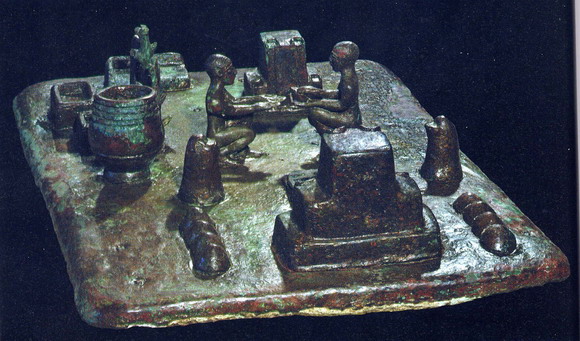































 Cluster of sites including Rakhigarhi, close to and west of Hulas.
Cluster of sites including Rakhigarhi, close to and west of Hulas.








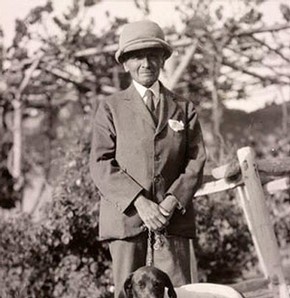
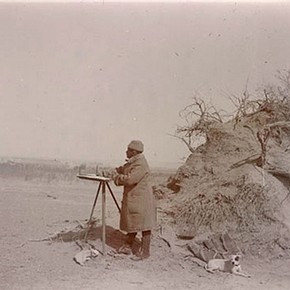
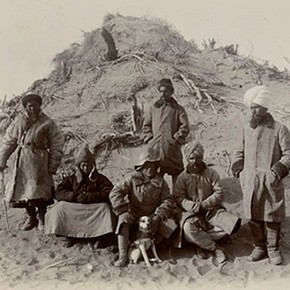





![Bhugola_or_Earth-Ball_by_Ksema_Karna,_India,_1571_[Inv.51703]_-®_Museum_of_the_History_of_Science,_University_of_Oxford[1]](http://qzprod.files.wordpress.com/2017/10/bhugola_or_earth-ball_by_ksema_karna_india_1571_inv-51703_-c2ae_museum_of_the_history_of_science_university_of_oxford1.jpg?quality=80&strip=all&w=4288)
![JC_Bose_Oscillating_Plate_Phytograph,_early_1900s_-®_J_C_Bose_Science_Heritage_Museum,_courtesy_of_Science_Museum_Group[1]](http://qzprod.files.wordpress.com/2017/10/jc_bose_oscillating_plate_phytograph_early_1900s_-c2ae_j_c_bose_science_heritage_museum_courtesy_of_science_museum_group1.jpg?quality=80&strip=all&w=4192)

![Model_of_Polar_Satellite_Launch_Vehicle,_2017_-®_Indian_Space_Research_Organisation,_courtesy_of_Science_Museum_Group[1]](http://qzprod.files.wordpress.com/2017/10/model_of_polar_satellite_launch_vehicle_2017_-c2ae_indian_space_research_organisation_courtesy_of_science_museum_group1.jpg?quality=80&strip=all&w=2434)

![Model_of_Mars_colour_camera,_2013_-®_Indian_Space_Research_Organisation,_courtesy_of_Science_Museum_Group[1]](http://qzprod.files.wordpress.com/2017/10/model_of_mars_colour_camera_2013_-c2ae_indian_space_research_organisation_courtesy_of_science_museum_group1.jpg?quality=80&strip=all&w=6210)














 The researchers will relook at the science, technology and innovations that happened in ancient India in 3,000–4,500 BC or 5,000-6,000 years ago.(Saumya Khandelwal/HT FILE PHOTO)
The researchers will relook at the science, technology and innovations that happened in ancient India in 3,000–4,500 BC or 5,000-6,000 years ago.(Saumya Khandelwal/HT FILE PHOTO)




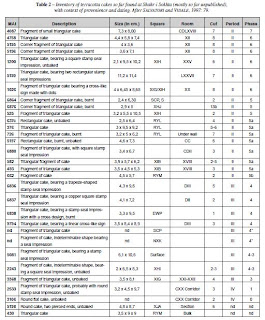

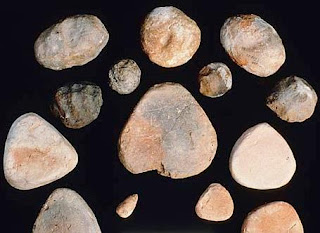


 poḷa 'bos indicus, zebu' rebus: poḷa 'magnetite, ferrite ore'
poḷa 'bos indicus, zebu' rebus: poḷa 'magnetite, ferrite ore'
 meḍ 'body' rebus: meḍ
meḍ 'body' rebus: meḍ dhāu 'strand' (cross-section view) rebus: dhāū 'red stone minerals' PLUSkolom 'three' rebus: kolimi 'smithy, forge'.
dhāu 'strand' (cross-section view) rebus: dhāū 'red stone minerals' PLUSkolom 'three' rebus: kolimi 'smithy, forge'.


 Binjor. Potsherd with painted saffloweer. karaḍā 'safflower'.करडी [ karaḍī ] id. rebus: kaaraḍā 'hard alloy' (Marathi) Allograph:
Binjor. Potsherd with painted saffloweer. karaḍā 'safflower'.करडी [ karaḍī ] id. rebus: kaaraḍā 'hard alloy' (Marathi) Allograph:  dāṭu 'cross' rebus: dhatu = mineral (Santali) Hindi. dhāṭnā 'to send out, pour out
dāṭu 'cross' rebus: dhatu = mineral (Santali) Hindi. dhāṭnā 'to send out, pour out














































































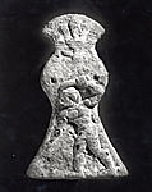
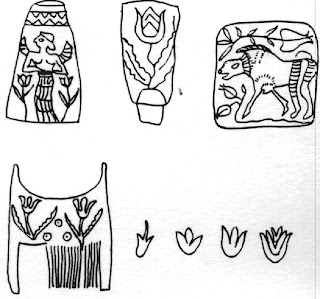







 Bronze Ewer (Dhalacha)
Bronze Ewer (Dhalacha)































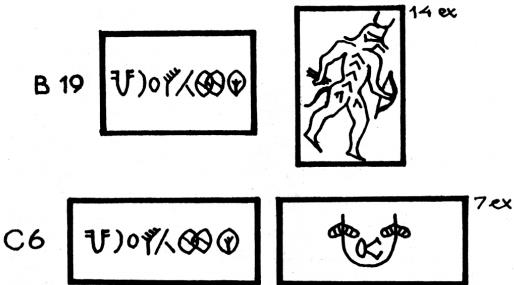



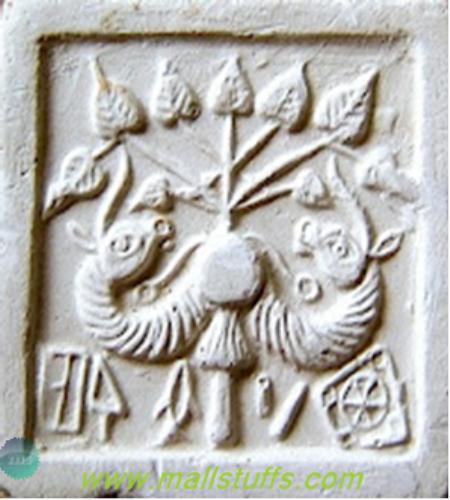
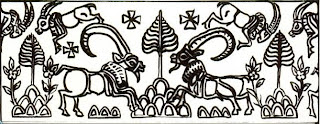
 m0296 See:
m0296 See: 









 Mehergarh. Cire perdue method used to make spoked wheel of copper/bronze. 4th millennium BCE.
Mehergarh. Cire perdue method used to make spoked wheel of copper/bronze. 4th millennium BCE.

 Rama at Sita's swayamvara, Jyotipunja Sign Theatre, Kathmandu, Nepal. Photo:Benoy K.. Behl
Rama at Sita's swayamvara, Jyotipunja Sign Theatre, Kathmandu, Nepal. Photo:Benoy K.. Behl Rama in the court of King Janaka, Saroja Vaidyanathan performance, India. Photo:Benoy K. Behl
Rama in the court of King Janaka, Saroja Vaidyanathan performance, India. Photo:Benoy K. Behl Rama with great bow and King Janaka, Saroja Vaidyanathan performance. Photo:Benoy K. Behl
Rama with great bow and King Janaka, Saroja Vaidyanathan performance. Photo:Benoy K. Behl Ravana and King Janaka, Saroja Vaidyanathan performance, India. Photo:Benoy K. Behl
Ravana and King Janaka, Saroja Vaidyanathan performance, India. Photo:Benoy K. Behl Rama and Sita, Apsaras Arts, Singapore. Photo:Benoy K. Behl
Rama and Sita, Apsaras Arts, Singapore. Photo:Benoy K. Behl Rama and Sita, Saroja Vaidyanathan performance, India. Photo:Benoy K. Behl
Rama and Sita, Saroja Vaidyanathan performance, India. Photo:Benoy K. Behl Rama and Sita, Malya Raja Shanthiya, Sri Lanka. Photo:Benoy K. Behl
Rama and Sita, Malya Raja Shanthiya, Sri Lanka. Photo:Benoy K. Behl King and Queen (Rama and Sita), Lhayee Lugar Performing Arts, Bhutan. Photo:Benoy K. Behl
King and Queen (Rama and Sita), Lhayee Lugar Performing Arts, Bhutan. Photo:Benoy K. Behl Rama, Sita and Lakshmana, Jyotipunja Sign Theatre, Kathmandu. Photo:Benoy K. Behl
Rama, Sita and Lakshmana, Jyotipunja Sign Theatre, Kathmandu. Photo:Benoy K. Behl Surpanakha (as Sundari) and Lakshmana, Jyotipunja Sign Theatre, Kathmandu. Photo:Benoy K. Behl
Surpanakha (as Sundari) and Lakshmana, Jyotipunja Sign Theatre, Kathmandu. Photo:Benoy K. Behl Ravana, Phralak Phralam Theatre, Luang Prabang, Lao PDR. Photo:Benoy K. Behl
Ravana, Phralak Phralam Theatre, Luang Prabang, Lao PDR. Photo:Benoy K. Behl Golden deer and Ravana, Khon Ramakien, Thailand. Photo:Benoy K. Behl
Golden deer and Ravana, Khon Ramakien, Thailand. Photo:Benoy K. Behl Rama and Sita, Khon Ramakien. Photo:Benoy K. Behl
Rama and Sita, Khon Ramakien. Photo:Benoy K. Behl Sita and Lakshmana, Khon Ramakien. Photo:Benoy K. Behl
Sita and Lakshmana, Khon Ramakien. Photo:Benoy K. Behl Rama, Malya Raja Shanthiya, Sri Lanka. Photo:Benoy K. Behl
Rama, Malya Raja Shanthiya, Sri Lanka. Photo:Benoy K. Behl Hanuman, Khon Ramakien. Photo:Benoy K. Behl
Hanuman, Khon Ramakien. Photo:Benoy K. Behl Ravana, Khon Ramakien. Photo:Benoy K. Behl
Ravana, Khon Ramakien. Photo:Benoy K. Behl Ravana defeated, Aru Sri Art Theatre. Photo:Benoy K. Behl
Ravana defeated, Aru Sri Art Theatre. Photo:Benoy K. Behl Victorious Rama, Aru Sri Art Theatre, Sri Lanka. Photo:Benoy K. Behl
Victorious Rama, Aru Sri Art Theatre, Sri Lanka. Photo:Benoy K. Behl

 Ravana and Sita. Ramayana ballet, Prambanan Temple, Yogyakarta. Photo:BENOY K. BEHL
Ravana and Sita. Ramayana ballet, Prambanan Temple, Yogyakarta. Photo:BENOY K. BEHL Death of Jatayu. Ramayana ballet, Prambanan Temple, Yogyakarta. Photo:BENOY K. BEHL
Death of Jatayu. Ramayana ballet, Prambanan Temple, Yogyakarta. Photo:BENOY K. BEHL Burning of Lanka. Ramayana ballet, Prambanan Temple, Yogyakarta. Photo:BENOY K. BEHL
Burning of Lanka. Ramayana ballet, Prambanan Temple, Yogyakarta. Photo:BENOY K. BEHL Ravana being killed. Ramayana ballet, Prambanan Temple, Yogyakarta. Photo:BENOY K. BEHL
Ravana being killed. Ramayana ballet, Prambanan Temple, Yogyakarta. Photo:BENOY K. BEHL Rama and Lakshmana. Wat Xieng Thong, Luang Prabang, Lao People's Democratic Republic. Photo:BENOY K. BEH
Rama and Lakshmana. Wat Xieng Thong, Luang Prabang, Lao People's Democratic Republic. Photo:BENOY K. BEH Ravana. Guru Ammanoor Madhava Chakyar, Koodiyattam, Sanskrit dance drama. Photo:BENOY K. BEHL
Ravana. Guru Ammanoor Madhava Chakyar, Koodiyattam, Sanskrit dance drama. Photo:BENOY K. BEHL Ravana, Wayang shadow puppet. Museum Wayang, Jakarta, Indonesia. Photo:BENOY K. BEHL
Ravana, Wayang shadow puppet. Museum Wayang, Jakarta, Indonesia. Photo:BENOY K. BEHL Death of Ravana. Lav Kush Ramlila Committee, New Delhi. Photo:BENOY K. BEH
Death of Ravana. Lav Kush Ramlila Committee, New Delhi. Photo:BENOY K. BEH Ravana. Lav Kush Ramlila Committee. Photo:BENOY K. BEHL
Ravana. Lav Kush Ramlila Committee. Photo:BENOY K. BEHL Ravana, Odissi dance. Kiran Sehgal & Sahitya Kala Parishad (all female cast), New Delhi. Photo:BENOY K. BEHL
Ravana, Odissi dance. Kiran Sehgal & Sahitya Kala Parishad (all female cast), New Delhi. Photo:BENOY K. BEHL Statue of Bali. The island of Bali is named after the character in Ramayana. Photo:BENOY K. BEHL
Statue of Bali. The island of Bali is named after the character in Ramayana. Photo:BENOY K. BEHL Victorious Rama. Sala Chalermkrung Royal Theatre, Thailand. Photo:BENOY K. BEHL
Victorious Rama. Sala Chalermkrung Royal Theatre, Thailand. Photo:BENOY K. BEHL Rama and Sita, Odissi dance. Kiran Sehgal &Sahitya Kala Parishad (all female cast). Photo:BENOY K. BEHL
Rama and Sita, Odissi dance. Kiran Sehgal &Sahitya Kala Parishad (all female cast). Photo:BENOY K. BEHL Rama, Odissi dance. Kiran Sehgal & Sahitya Kala Parishad (all female cast). Photo:BENOY K. BEHL
Rama, Odissi dance. Kiran Sehgal & Sahitya Kala Parishad (all female cast). Photo:BENOY K. BEHL Sita and Ravana. Kecak dance, Uluwatu Temple, Bali. Photo:BENOY K. BEHL
Sita and Ravana. Kecak dance, Uluwatu Temple, Bali. Photo:BENOY K. BEHL





































 Human face pictogram on Gobekli Tepe pillars.
Human face pictogram on Gobekli Tepe pillars.

 Indus Script hypertexts and meanings:
Indus Script hypertexts and meanings:  ranku'liquid measure' rebus: ranku'tin'
ranku'liquid measure' rebus: ranku'tin'


 Bharhut sculptural frieze venerating cobra hood and tree (Indus Script hypertexts).
Bharhut sculptural frieze venerating cobra hood and tree (Indus Script hypertexts).






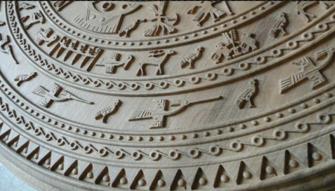
 Hieroglyphs of kanka 'heron' on Dong Son bronze drums.
Hieroglyphs of kanka 'heron' on Dong Son bronze drums.

 Bird, boat hieroglyphs on Dong Son drums
Bird, boat hieroglyphs on Dong Son drums 
 Vishnu - 13th Century - Indian Art - Asian Art Museum of San Francisco |
Vishnu - 13th Century - Indian Art - Asian Art Museum of San Francisco |







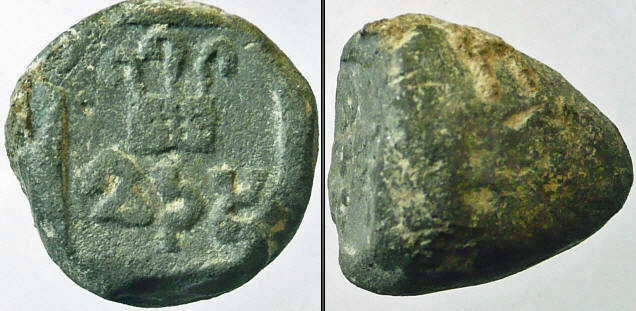



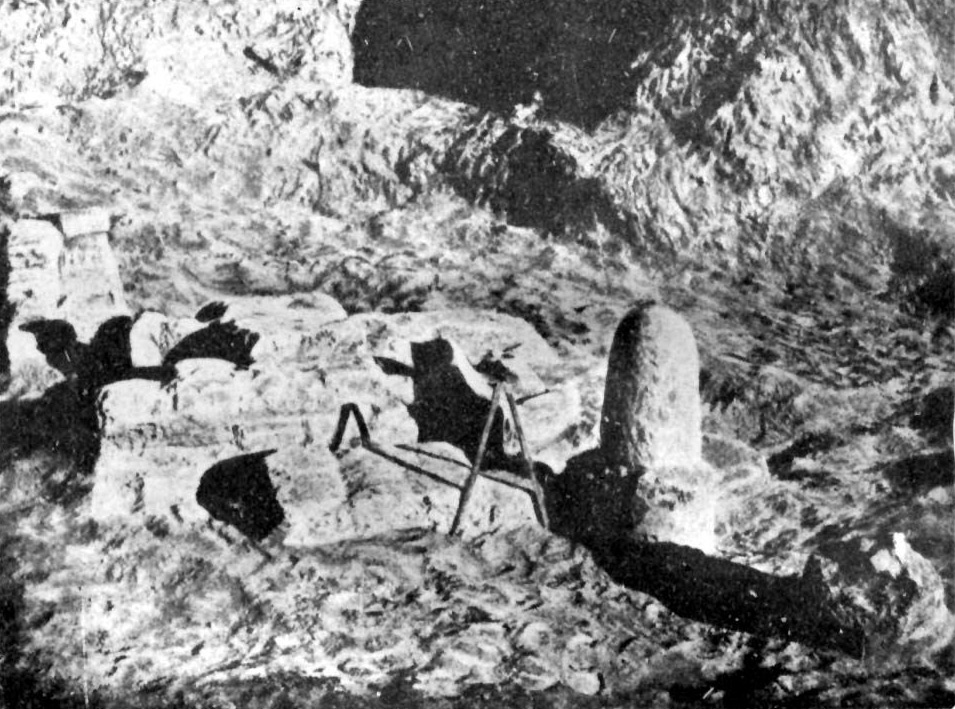 Three stone Siva Lingas found in Harappa.
Three stone Siva Lingas found in Harappa. 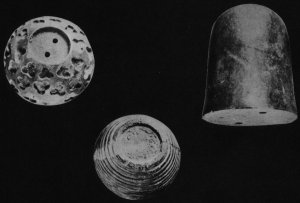 Two decorated bases and a lingam, Mohenjodaro.
Two decorated bases and a lingam, Mohenjodaro. 






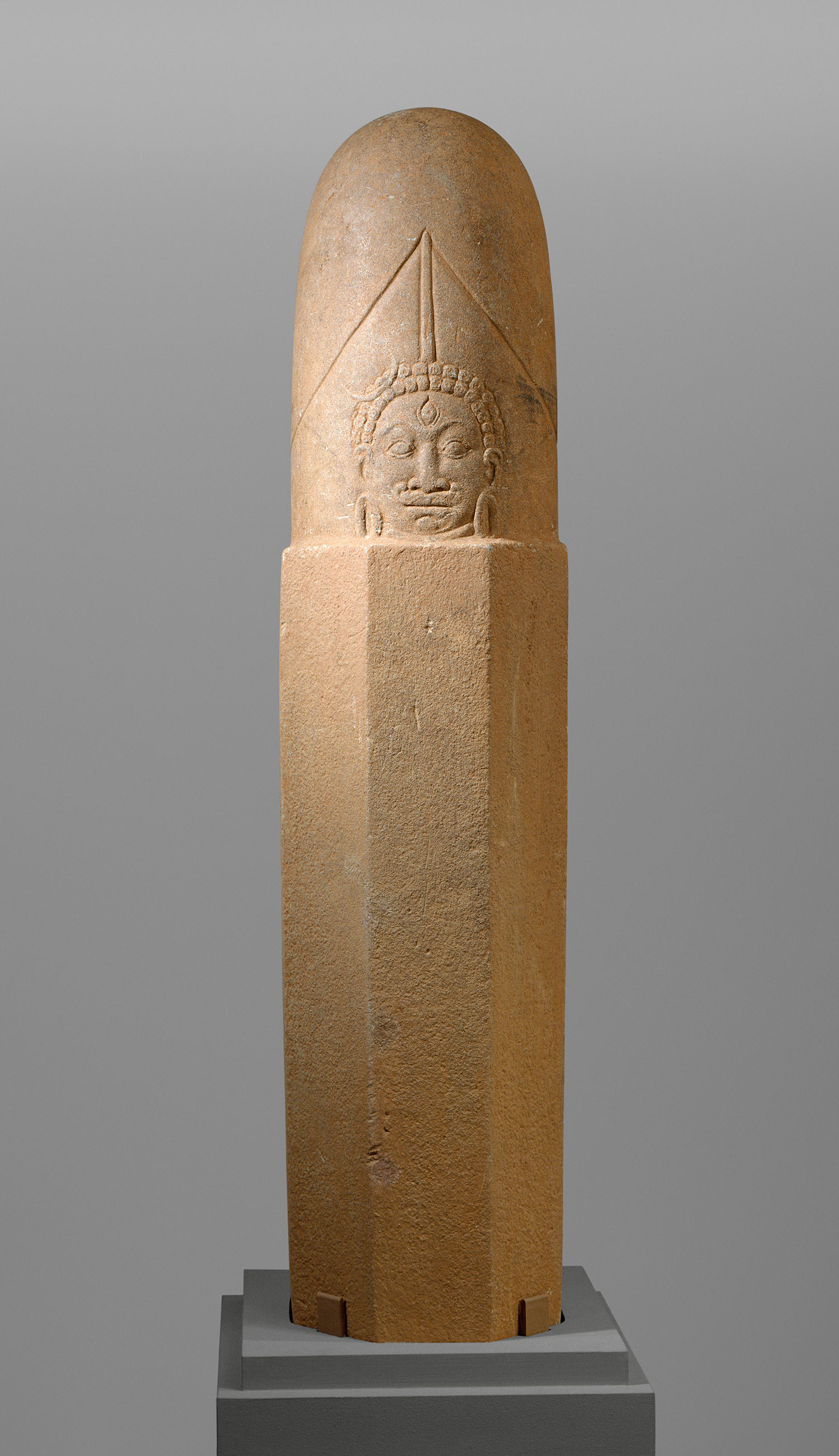
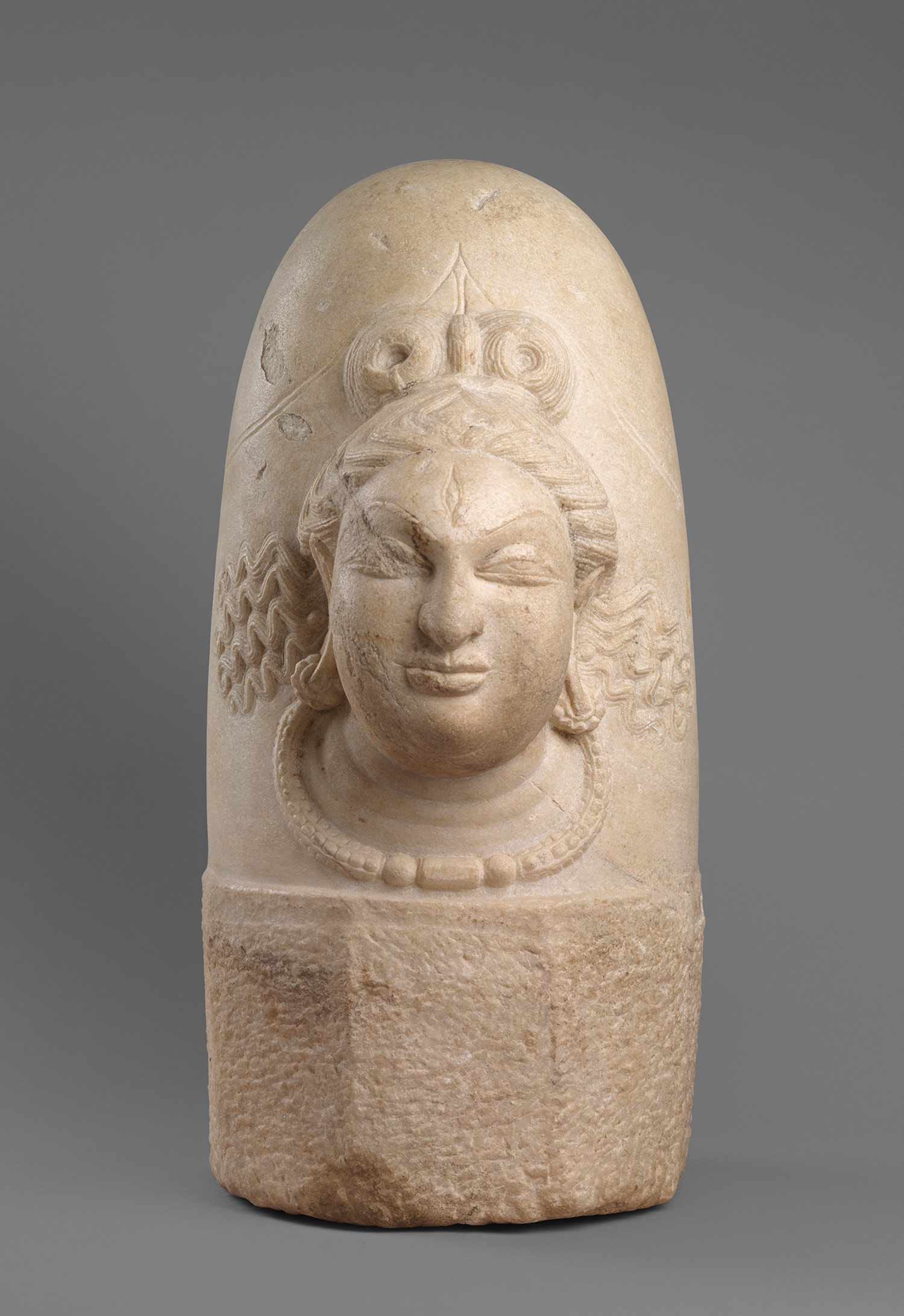
















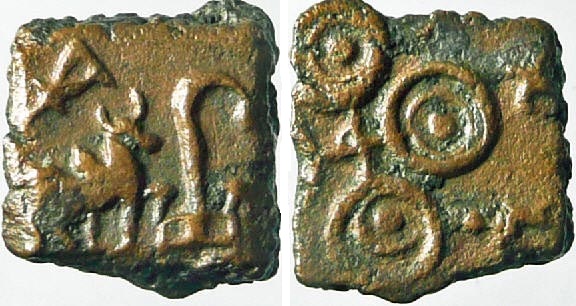

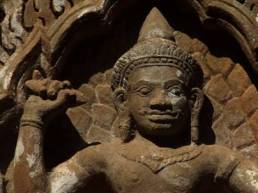

 Panchalas of Ahichhatra, 75-50 BC, Indramitra, 5.92g, 17mm, Indra holding 'Vajra' (Thunderbolt)
Panchalas of Ahichhatra, 75-50 BC, Indramitra, 5.92g, 17mm, Indra holding 'Vajra' (Thunderbolt) Vajrasatva with vajra
Vajrasatva with vajra 



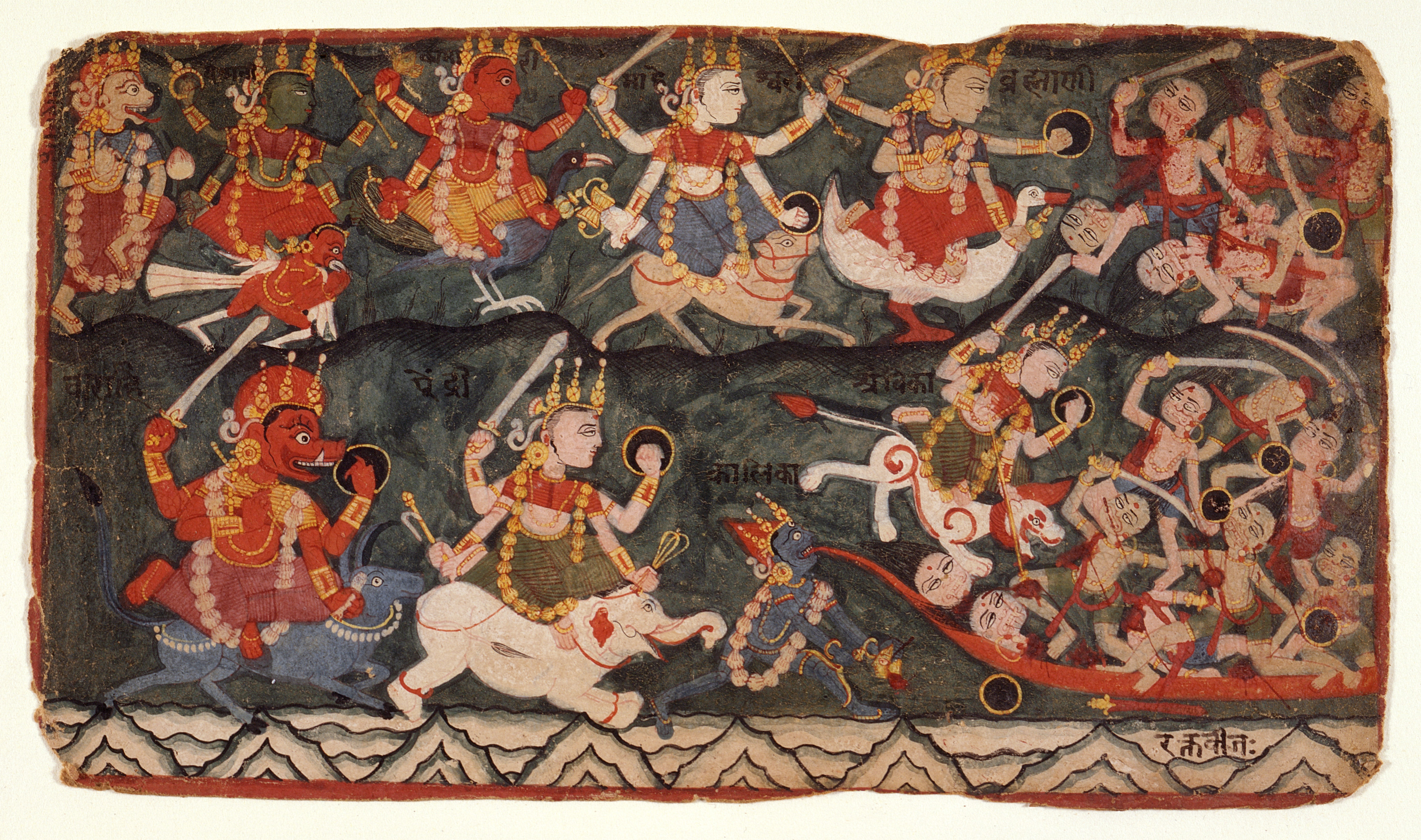

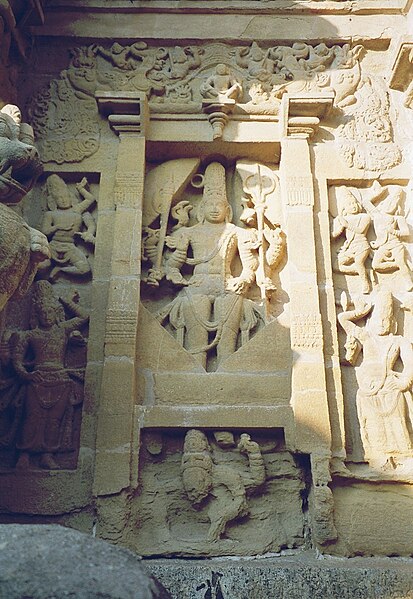


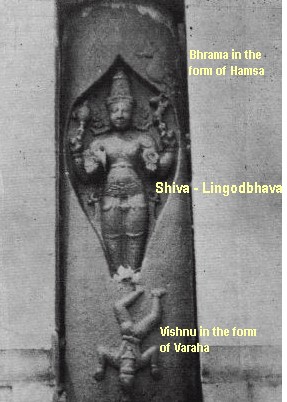



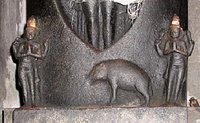





 Lingodbhavamurti. Stone. Dasavatara cave, Ellora. (After TA Gopinatha Rao, 1997, Elements of Hindu iconography, Vol.2, Pt.1, Delhi, Motilal Banarsidass, Plate XIV, Fig.1, p. 109)
Lingodbhavamurti. Stone. Dasavatara cave, Ellora. (After TA Gopinatha Rao, 1997, Elements of Hindu iconography, Vol.2, Pt.1, Delhi, Motilal Banarsidass, Plate XIV, Fig.1, p. 109)





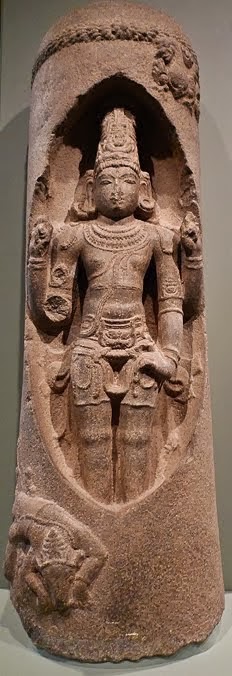
 Siva Lingodbhavamurti, Shiva apperaing in the falming linga, Tamil Nadu, Chola period, 12th-13th century, basalt. Musee Guimet.mg07 100112181 j r
Siva Lingodbhavamurti, Shiva apperaing in the falming linga, Tamil Nadu, Chola period, 12th-13th century, basalt. Musee Guimet.mg07 100112181 j r













 Chutus of Banavasi / Anandas of Karwar, Mulananda, 78-175 CE, Lead, 9.55g, Swastika to left of Tree-in-railing
Chutus of Banavasi / Anandas of Karwar, Mulananda, 78-175 CE, Lead, 9.55g, Swastika to left of Tree-in-railing Vidarbha, 200 BCE, Cast Copper, 3.86g, Swastika with Taurine symbol
Vidarbha, 200 BCE, Cast Copper, 3.86g, Swastika with Taurine symbol
 Taxila, 300-100 BCE, Copper, 1.5 Karshapana, 21mm, 12.43g, Elephant / Lion
Taxila, 300-100 BCE, Copper, 1.5 Karshapana, 21mm, 12.43g, Elephant / Lion
